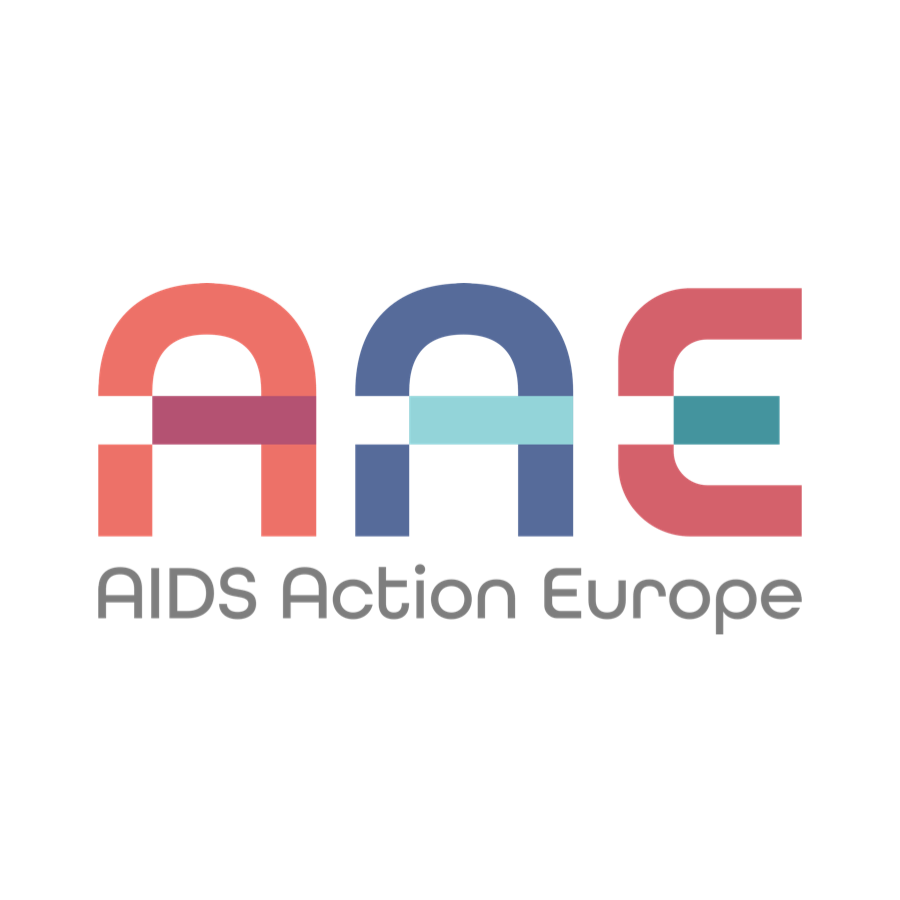Clearinghouse
Filter
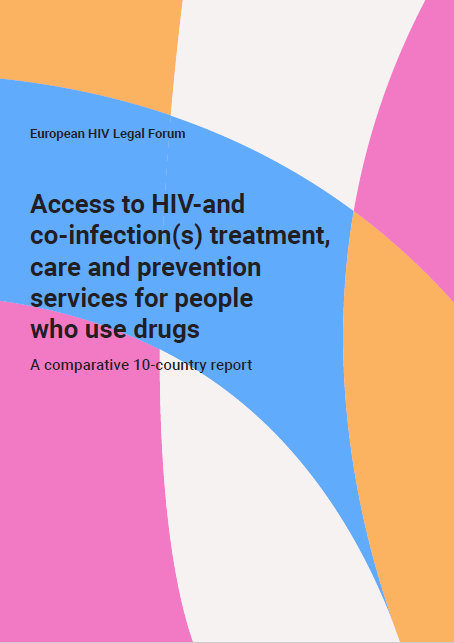
European HIV Legal Forum: Access to HIV-and co-infection(s) treatment, care and prevention services for people who use drugs. A comparative 10-country report
Addressing the needs of people who use drugs in the context of HIV and co-infection(s) is not just a health issue but also a matter of social justice and human rights. The pursuit of health equity, as enshrined in the SDGs, calls for a comprehensive approach that encompasses harm reduction, integrated care models, and supportive policies. This report aims to explore these dimensions in detail,…
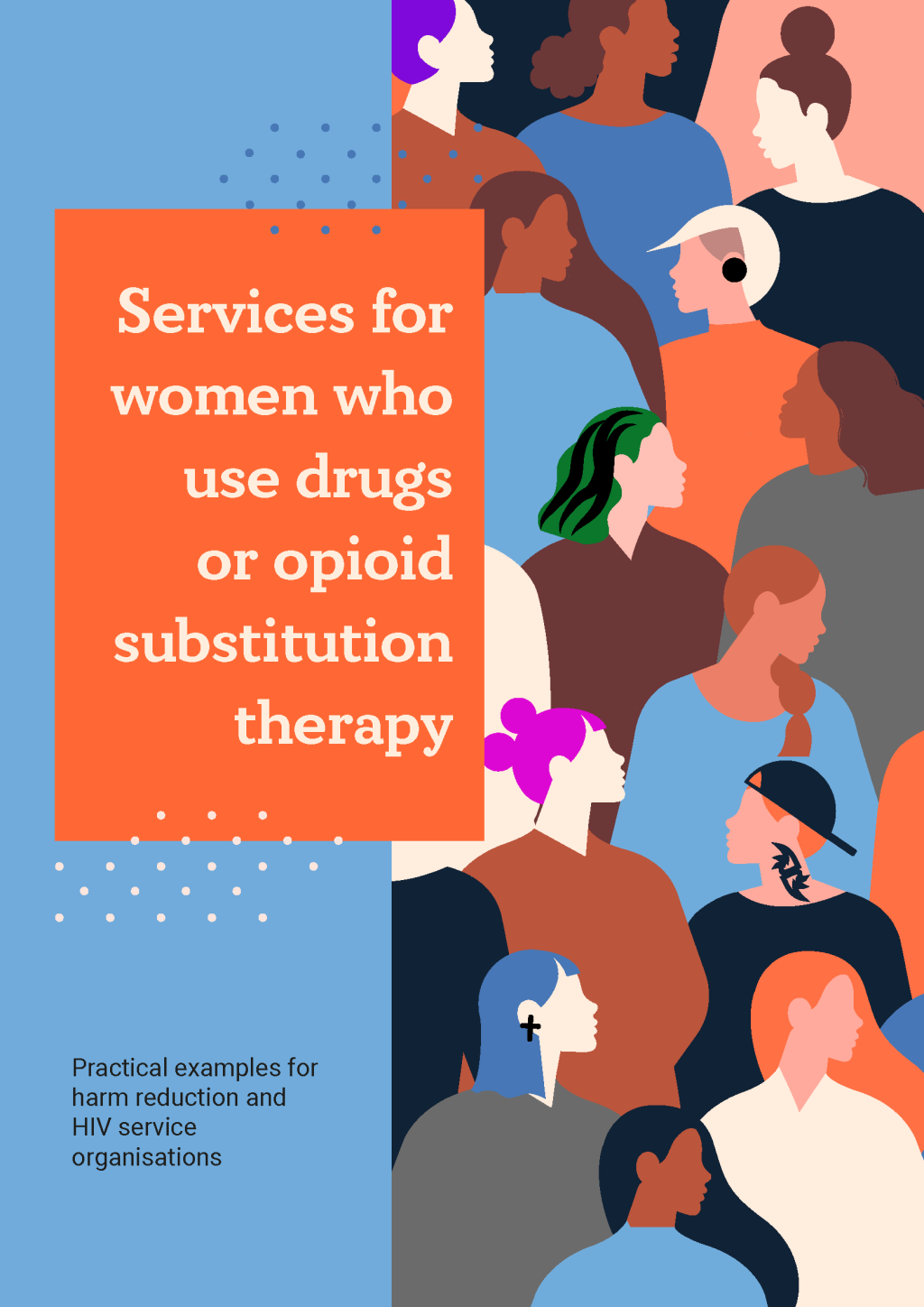
Services for women who use drugs or opioid substitution therapy. Practical examples for harm reduction and HIV service organisations
This handbook offers concrete suggestions and practical examples of activities for women who use drugs. It can also just serve as inspiration for other types of initiatives and projects. The aim is to increase the uptake of services by women who use drugs in the medium term.
To make these suggestions for specific activities as practical as possible, we have developed them in the form of fact…
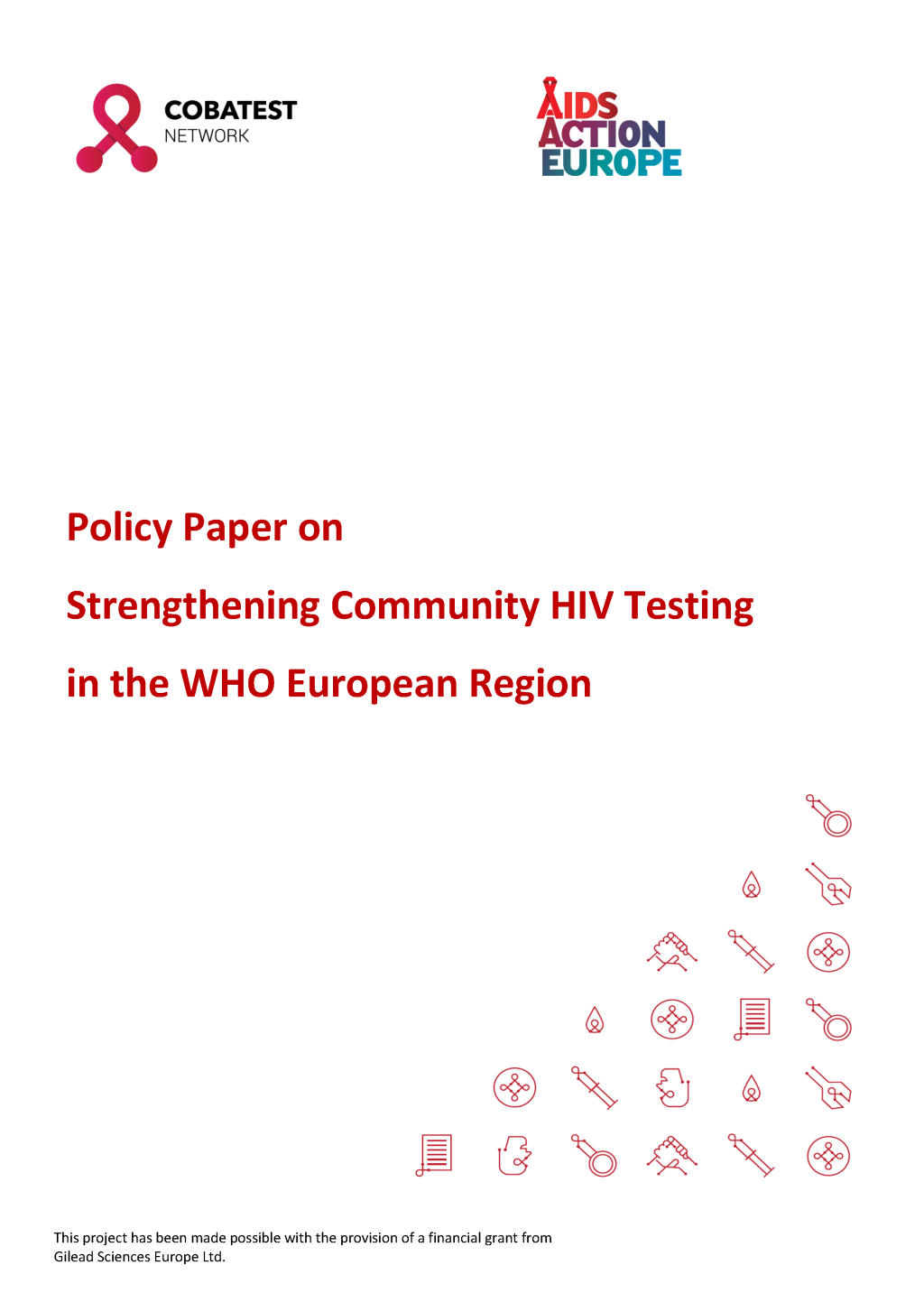
Policy Paper on Strengthening Community HIV Testing the WHO European Region
The Policy Paper is a result of a comparative 28-country report conducted by the COBATEST Network in 2022-2023.
Despite their valuable contributions, CSOs providing community HIV testing services encounter several challenges in their efforts to expand community HIV testing: inconsistent legal frameworks non-inclusion in national HIV plans, sustainability and funding, underutilization of data,…
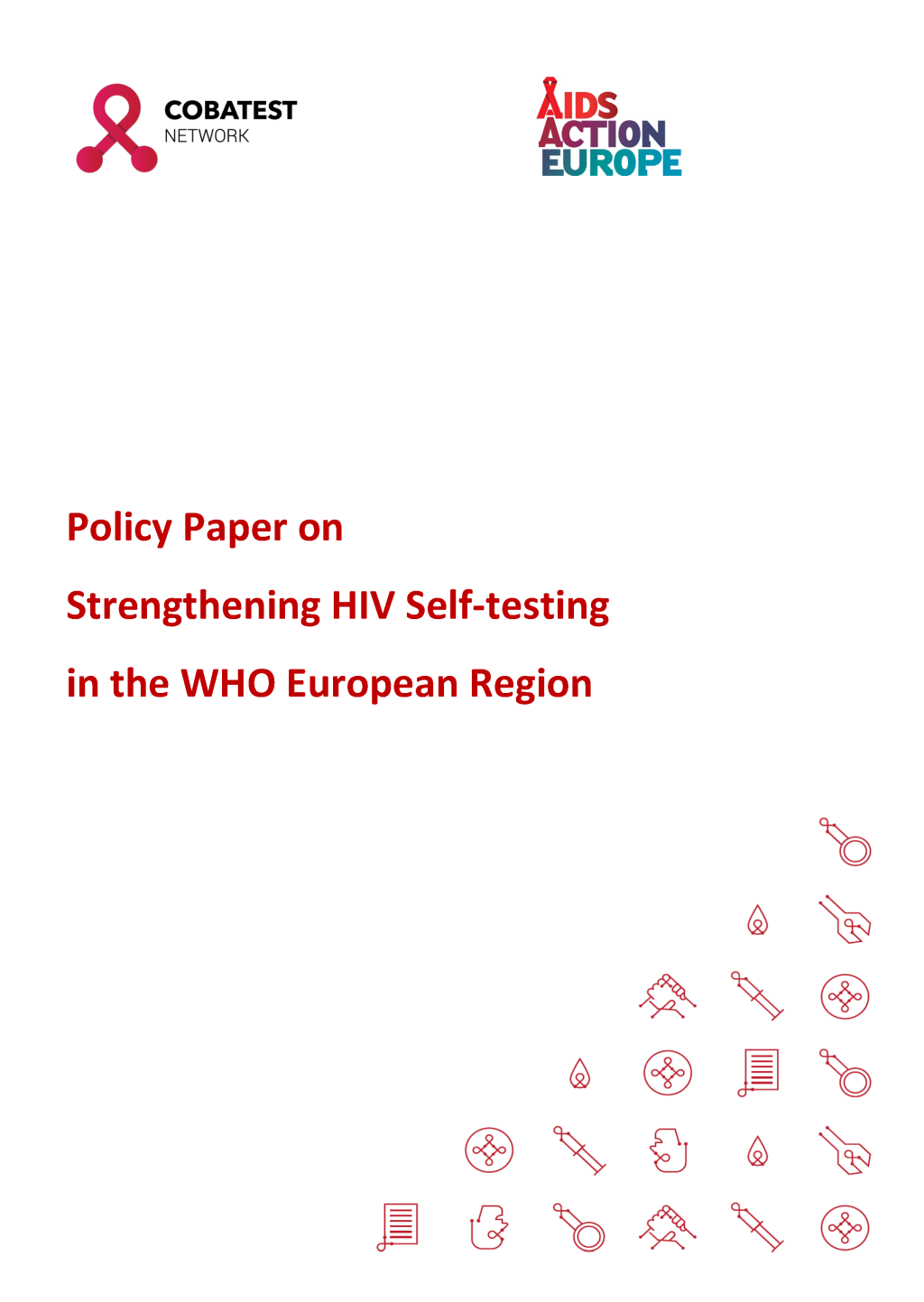
Policy Paper on Strengthening HIV Self-testing in the WHO European Region
The Policy Paper is a result of a comparative 28-country report conducted by the COBATEST Network in 2022-2023.
Communities and CSOs play a crucial role in advancing HIV testing initiatives, including HIV self-testing. Despite their efforts, they face specific challenges in implementing HIV self-testing initiatives. These challenges include: inconsistent legal frameworks, non-Inclusion in…
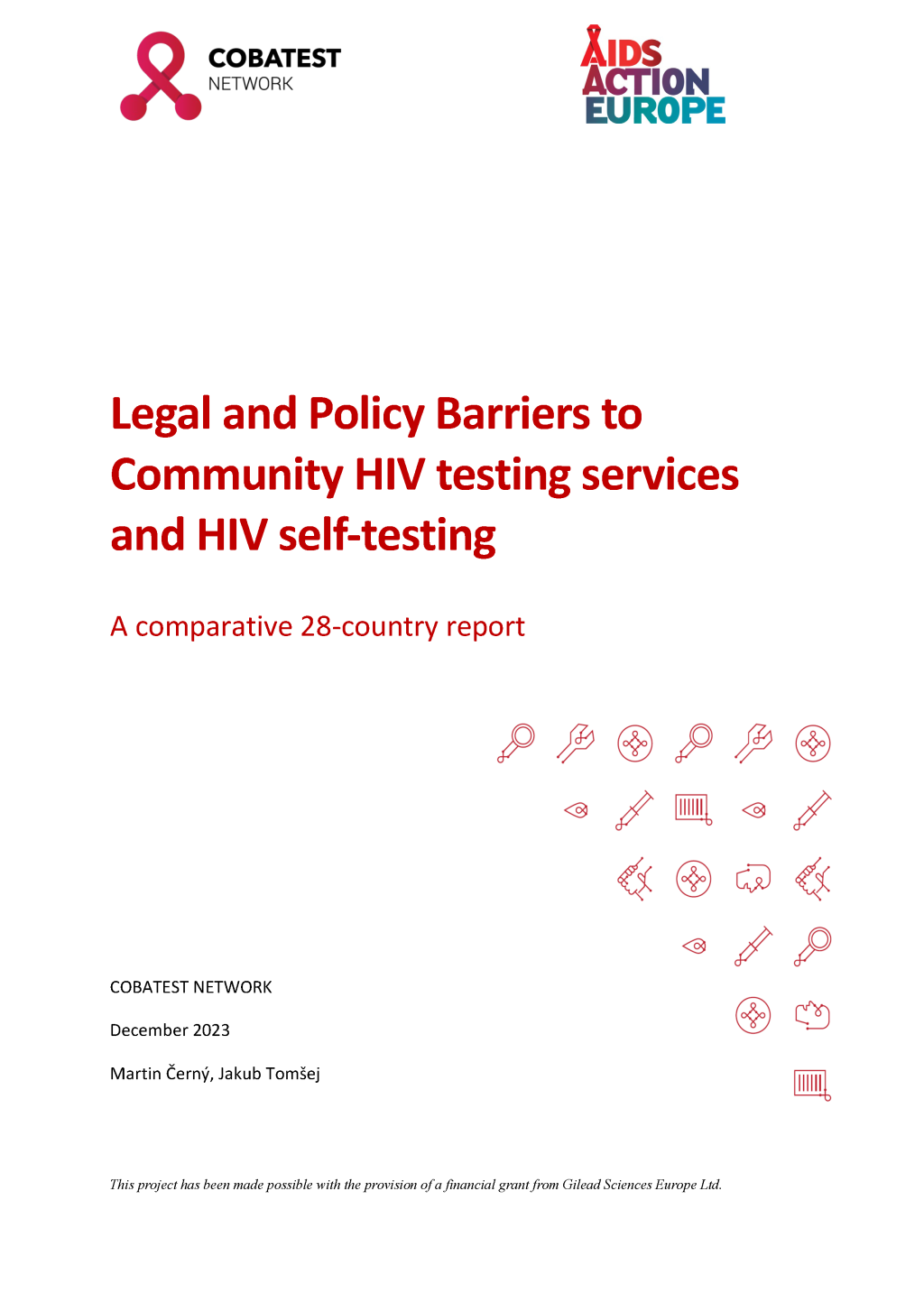
Legal and Policy Barriers to Community HIV testing services and HIV self-testing. A comparative 28-country report
The early diagnosis and treatment of HIV is crucial for reducing infection rates and improving the health outcomes of individuals and communities. PLHIV on effective ART have their viral load suppressed to an undetectable level, which means that they cannot pass on the virus even if other safer sex methods (e.g. a condom) are not used.[1] Community HIV testing has proven effective to detect new…

AAE Poster "Legal and Policy Barriers to the Provision of Community-based testing services in Europe and Central Asia"
At HepHIV 2023, AAE presented the poster "Legal and Policy Barriers to the Provision of Community-based testing services in Europe and Central Asia"
The poster is a result of the project Community Led and Based HIV Services - Key to Ending the HIV Epidemic in Europe and Central Asia which was developed in partnership with CEEISCAT and LILA Milano and ran for 20 months in 2022-2023. The project…
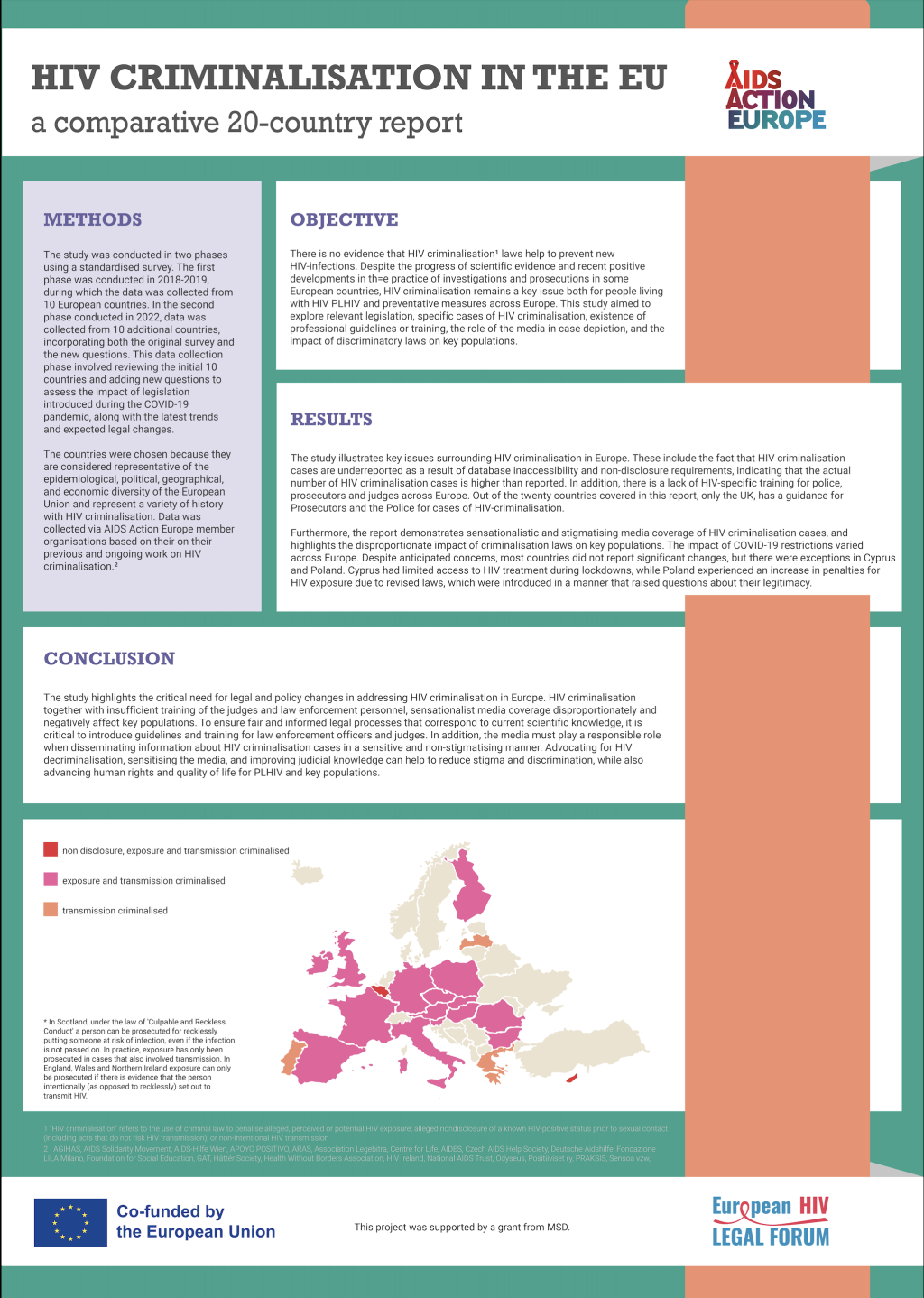
AAE Poster “HIV Criminalisation in the EU: a Comparative 20 country report”
At HepHIV 2023, AAE presented the poster “HIV Criminalisation in the EU: a Comparative 20 country report”. The poster is based on the EHLF HIV Criminalisation report, which was developed in two phases.
In the first phase in 2018-2019, the data was collected from 10 EU Member States. In the second phase, during 2021 and 2022 the data from the initial 10 countries was updated and collected from 10 …
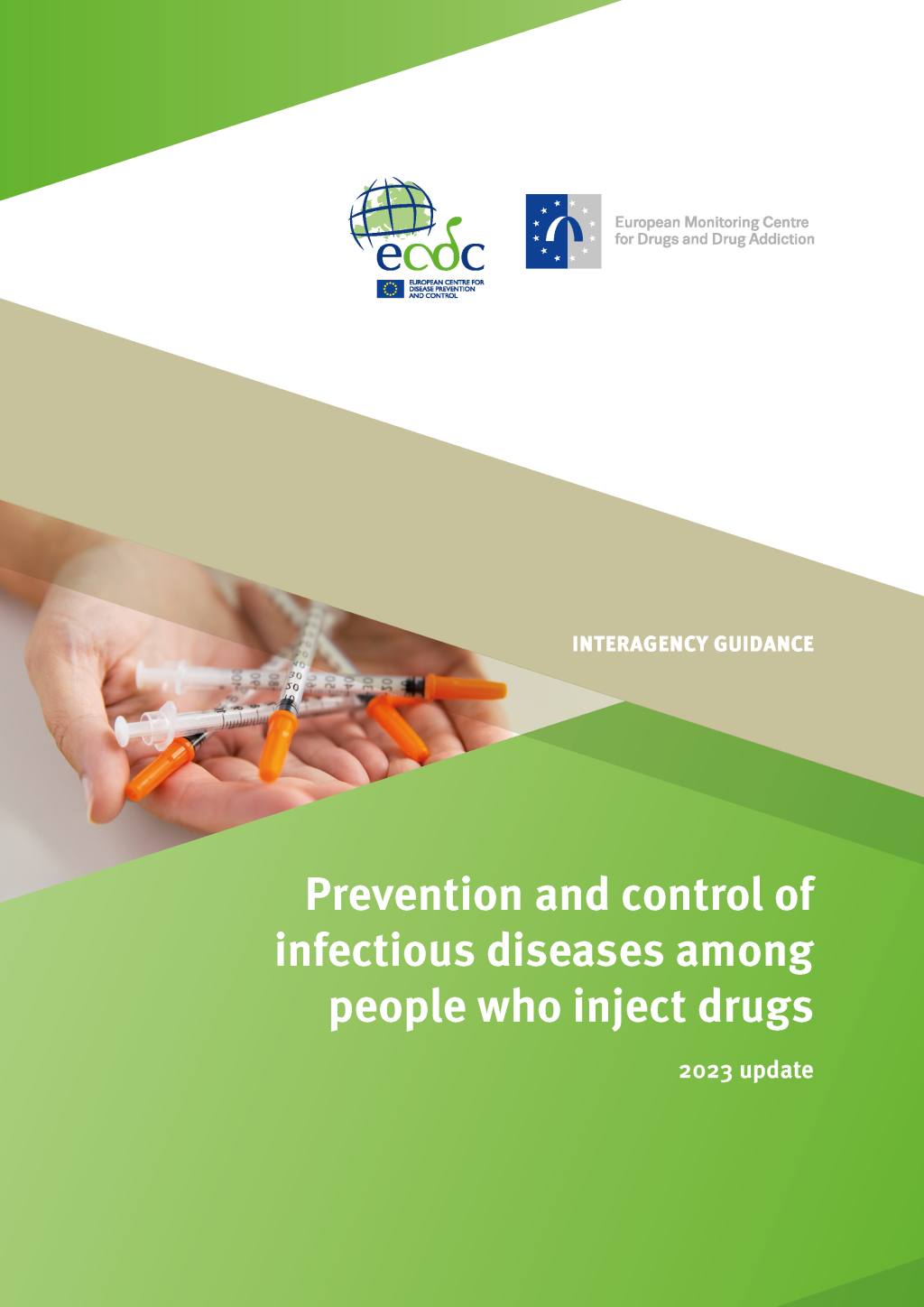
Prevention and control of infectious diseases among people who inject drugs
This joint guidance by the European Centre for Disease Prevention and Control (ECDC) and the European Monitoring Centre for Drugs and Drug Addiction (EMCDDA) aims to support policy-makers and public health/social programme planners by providing an evidence base for developing national strategies, policies, and programmes for preventing and controlling infections and infectious diseases among…
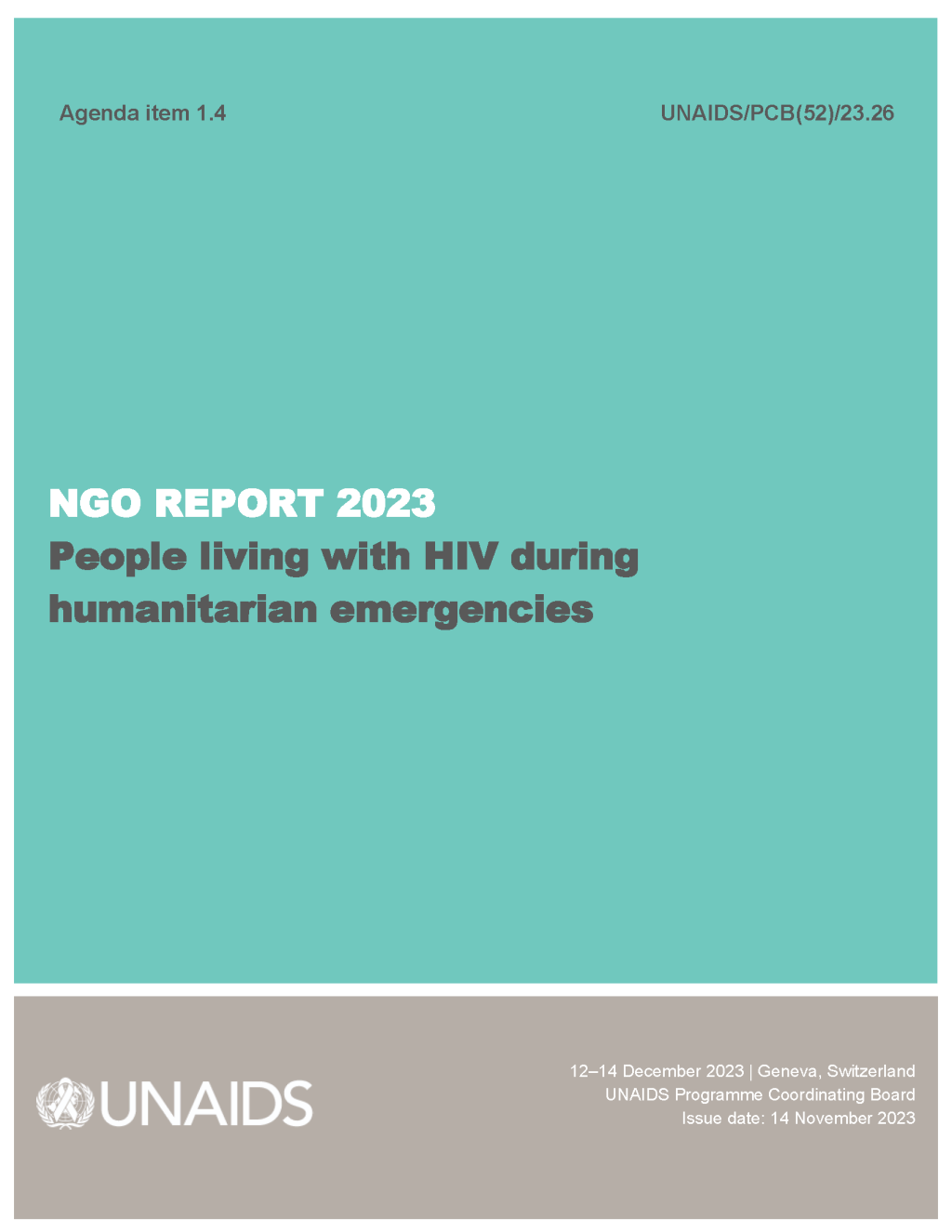
NGO Delegation's 2023 Report to the UNAIDS PCB - People living with HIV during humanitarian emergencies
The NGO Delegation has decided that this year’s report to the PCB will focus on ‘HIV response for people living with HIV during humanitarian crises and emergencies’.
The findings of this extensive study are to be documented, analyzed, and presented at this 2023 PCB meeting in December.
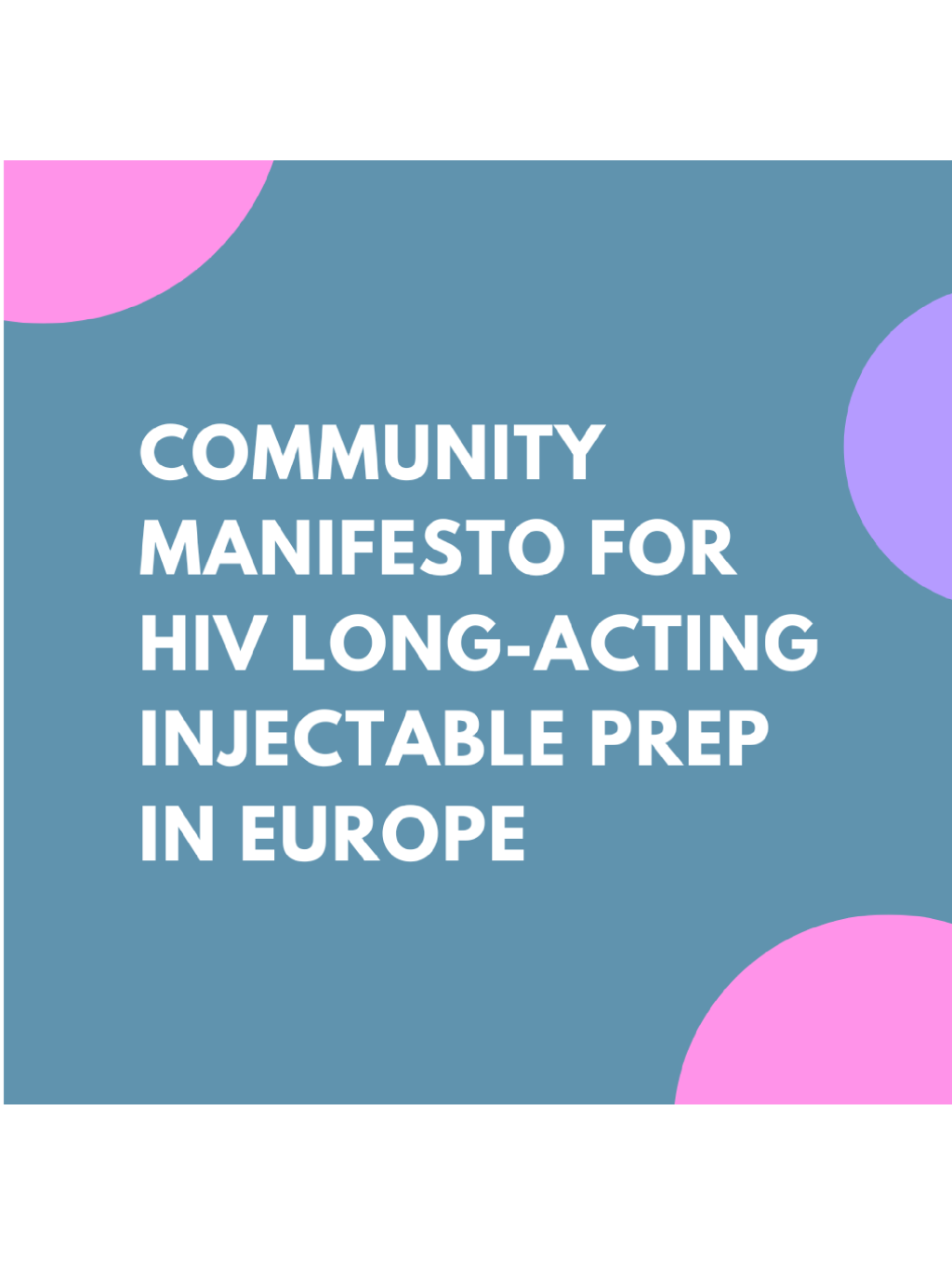
Community Manifesto for HIV Long-Acting Injectable PrEP in Europe
More than 40 European and global organisations are calling for the introduction of long acting injectable PrEP in Europe.
This document results from a consensus meeting held in Paris in March 2023 between regional and international HIV prevention organisations and activists including: AIDES; AIDS Action Europe; AVAC; Coalition PLUS; EATG; Fundacja Edukacji Spolecznej; GSSG – Germany’s…
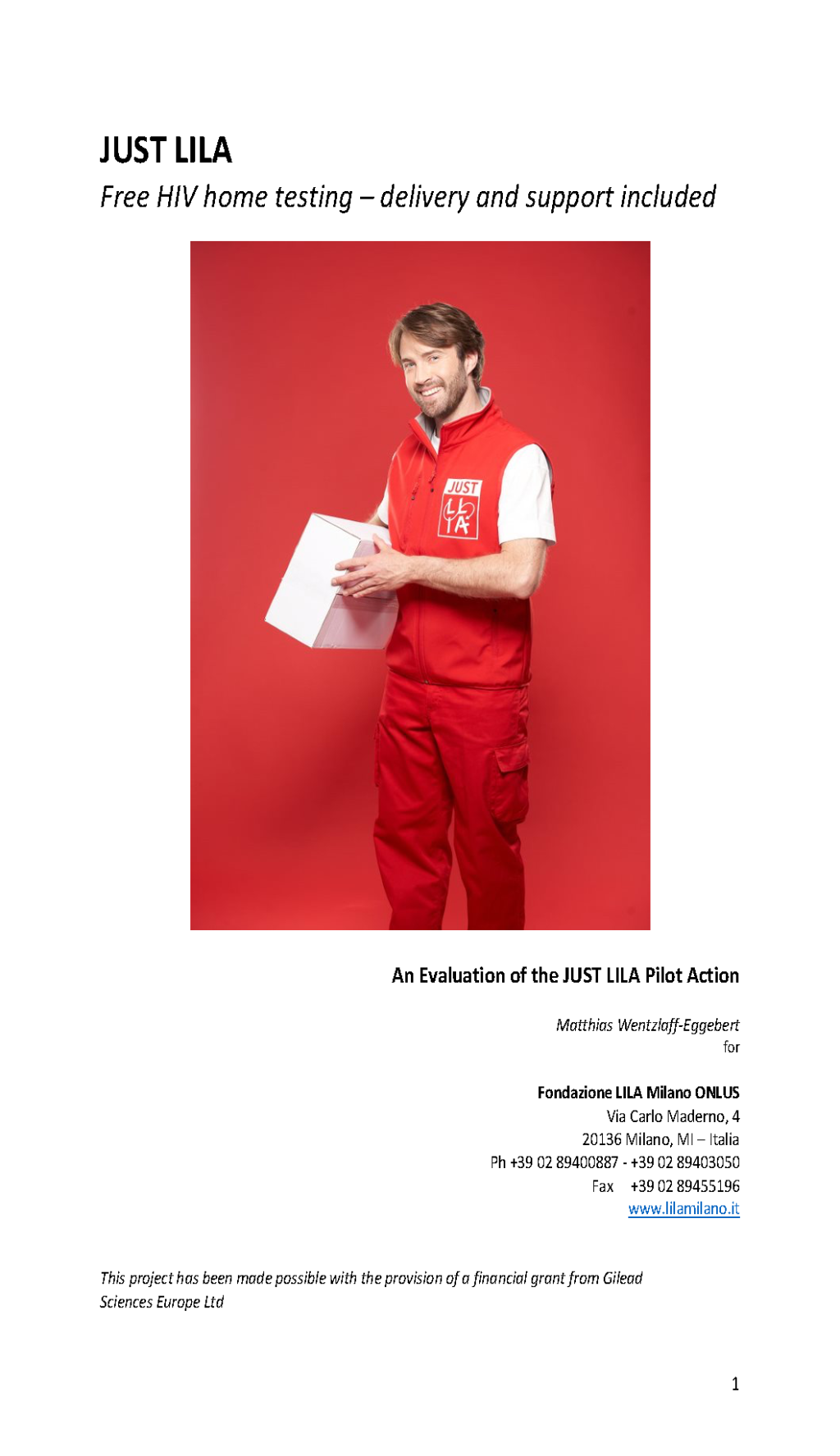
An Evaluation of the JUST LILA Pilot Action - Free HIV home testing – delivery and support included
JUST LILA is a pilot HIV self-testing campaign conducted in Italy as part of the ‘Community
Led and Based HIV Services - Key to Ending the HIV Epidemic in Europe and Central Asia’
project implemented by AIDS Action Europe, the COBATEST Network, and LILA Milano. The
campaign was launched in May 2022 and the pilot action concluded in June 2023.
With more than 2000 kits delivered, the pilot action…
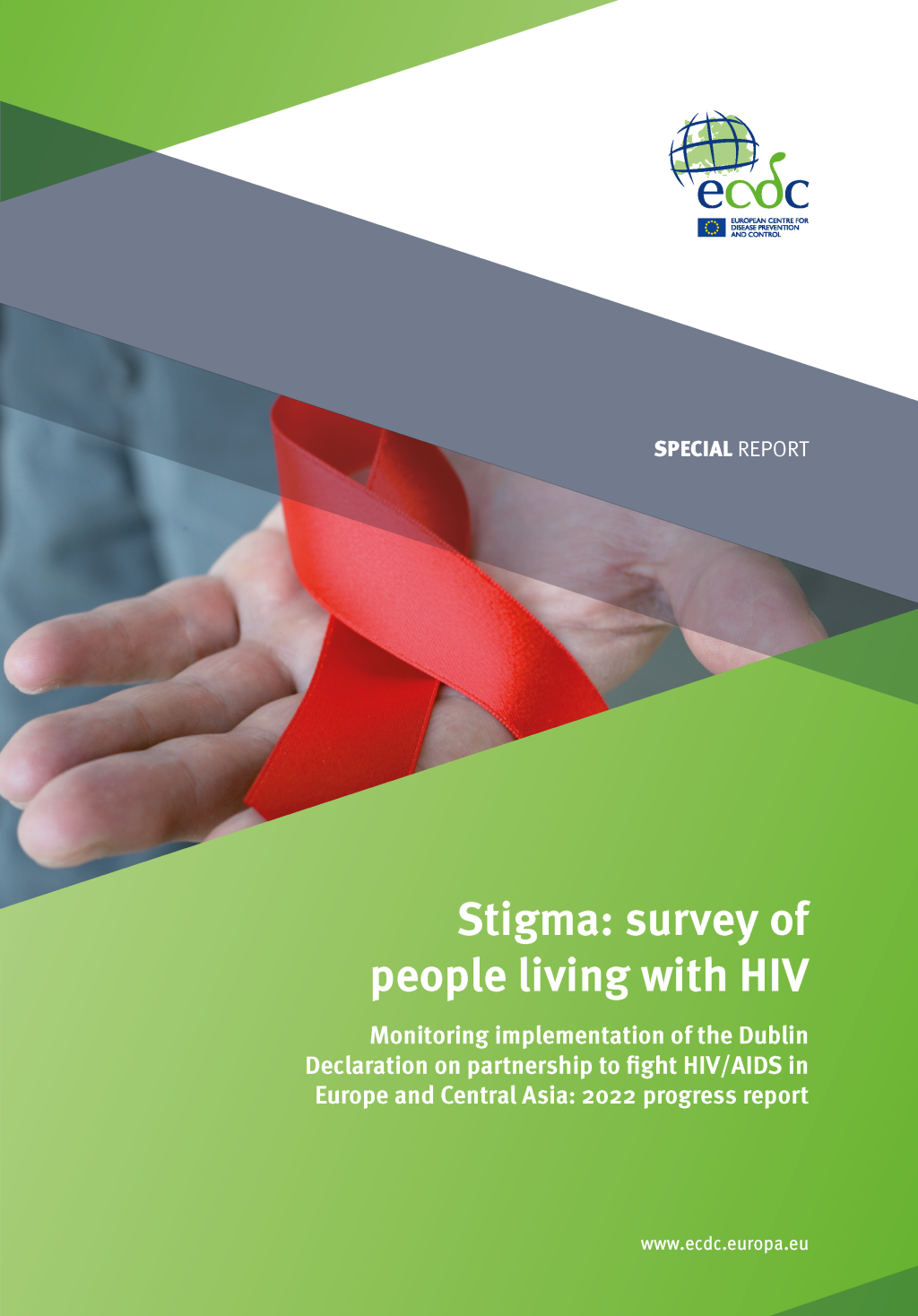
Stigma: survey of people living with HIV | Monitoring implementation of the Dublin Declaration on partnership to fight HIV/AIDS in Europe and Central Asia –2022 progress report
HIV-related stigma and discrimination remain major barriers to accessing HIV services for people living with HIV worldwide. In this context, stigma can be understood as the negative perception of people living with HIV based solely on their HIV status.
To improve the understanding of experienced HIV stigma in the community, ECDC — in collaboration with the European AIDS Treatment Group (EATG)…
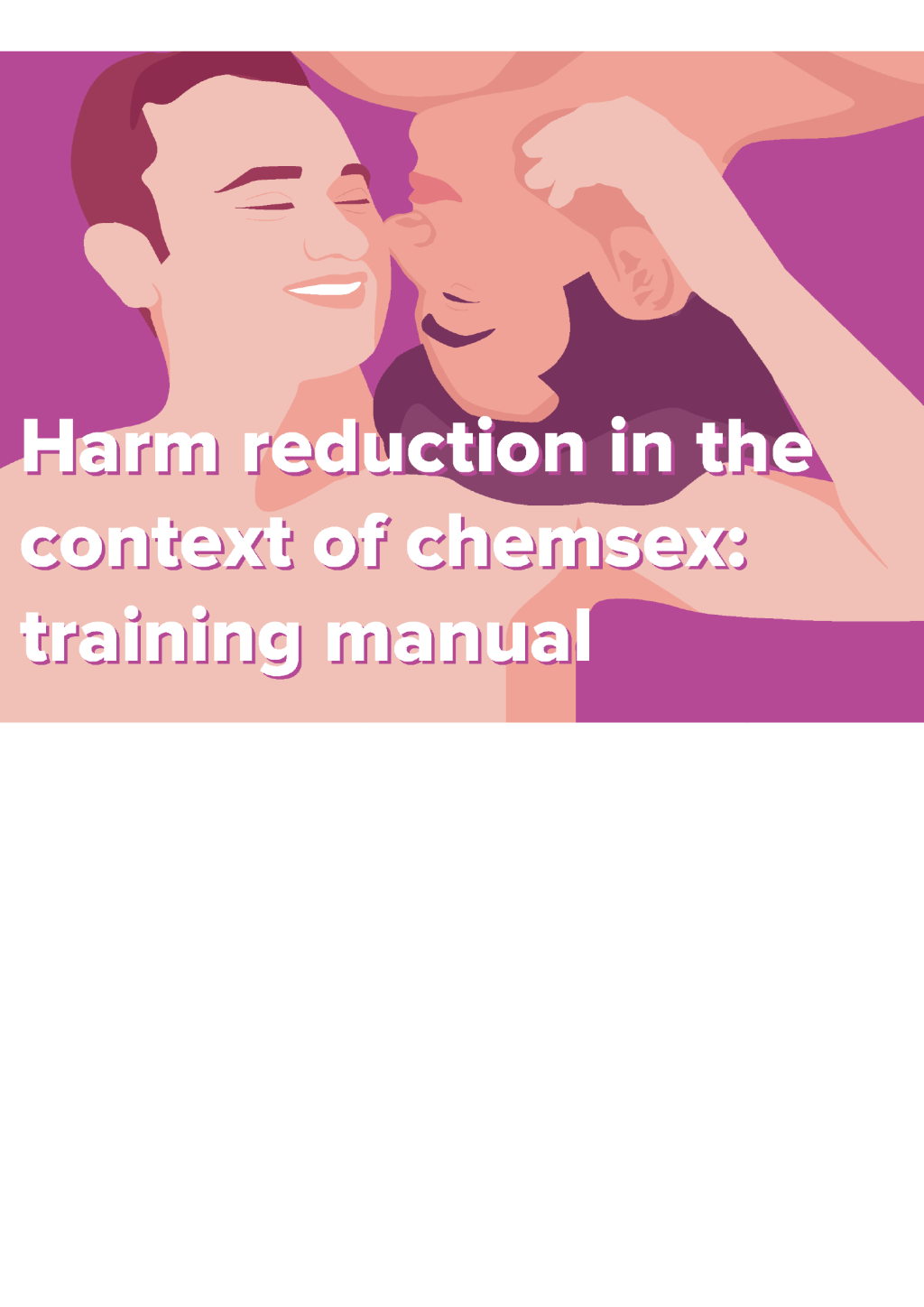
Harm reduction in the context of chemsex: training manual
Sexualised drug use, i.e. the use of any legal or illegal psychoactive substance before or during sex, is not new. In fact, substances have been used to enhance pleasure and overcome inhibitions in many cultures through the ages. Research from the last few decades has shown that sexualised drug use is more frequent among the LGBTQI+ community than other populations. This can partly be traced back…
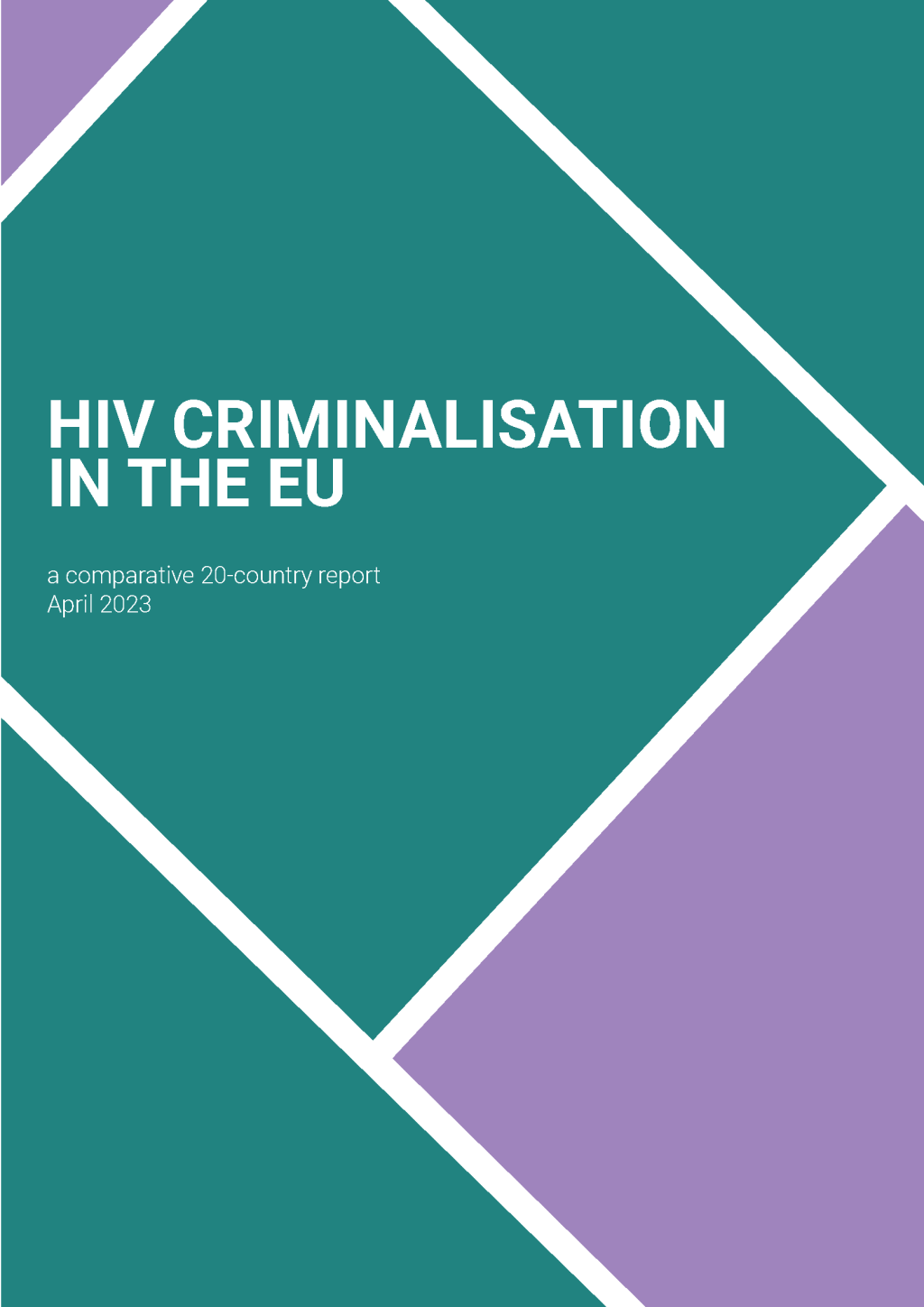
HIV Criminalisation in the EU
We would like to share with you the report on HIV Criminalisation in the EU, which is a result of the two-phase study AAE conducted in the framework of the European HIV Legal Forum.
In the first phase in 2018-2019, the data was collected from 10 countries. In the second phase, 2022 the data from the initial 10 countries was updated and collected from 10 new ones. The report includes information…
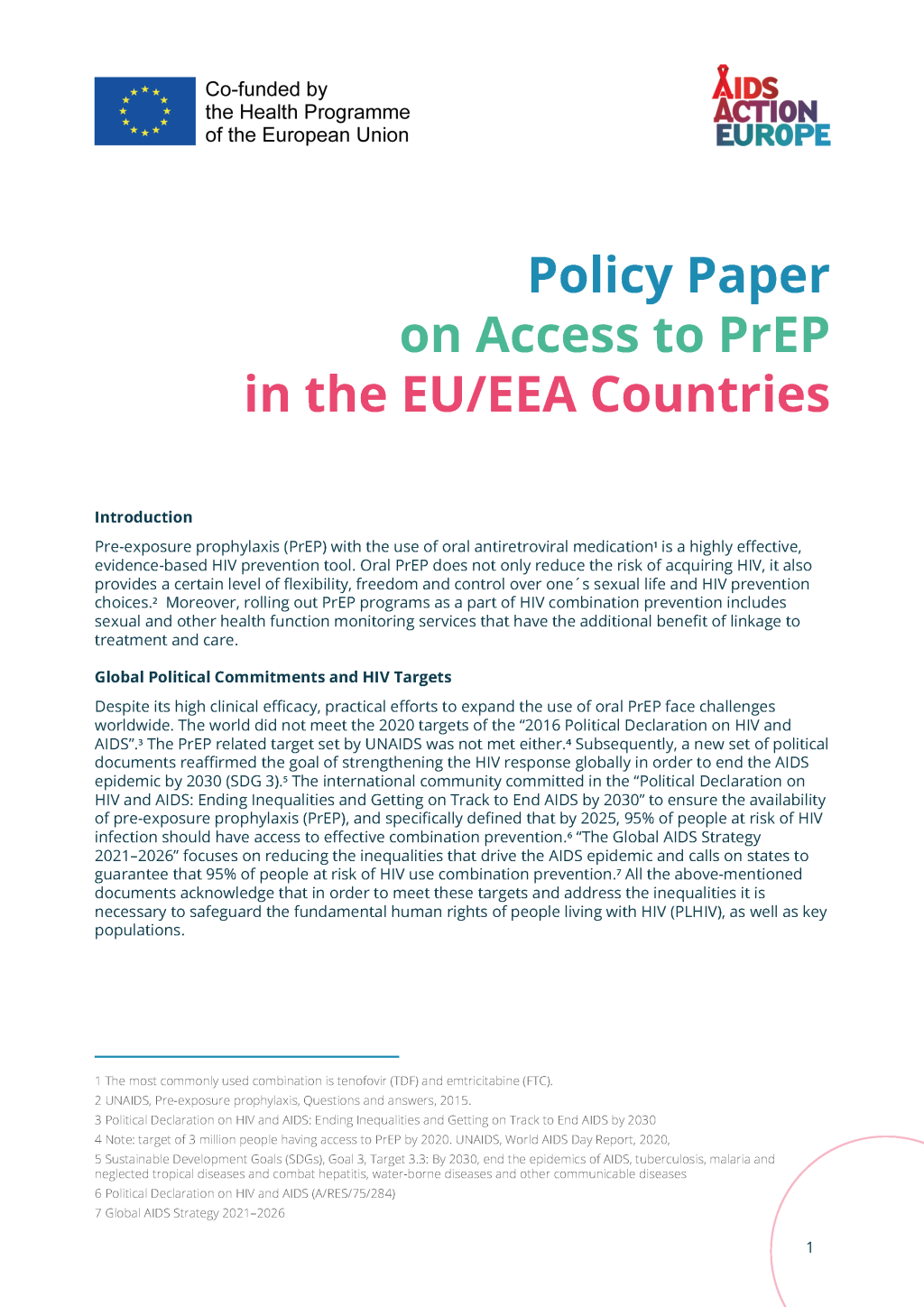
Policy Paper on Access to PrEP in the EU/EEA Countries
Pre-exposure prophylaxis (PrEP) with oral antiretroviral medication is a highly effective and evidence-based HIV prevention method. Despite its high clinical efficacy, efforts to expand the use of oral PrEP in EU/EEA countries have not fully realised its potential as part of combination prevention due to a variety of factors related to accessibility, affordability, and acceptability.
The design…
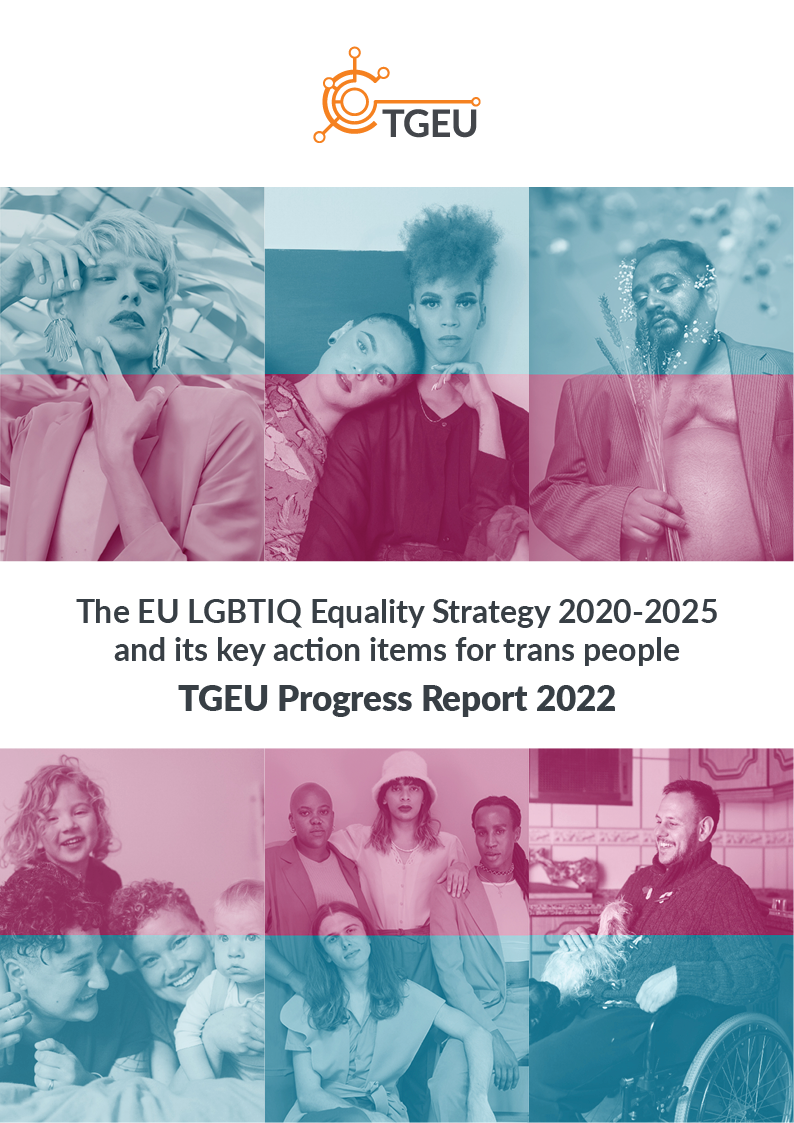
The EU LGBTIQ Equality Strategy 2020-2025 and its key action items for trans people: TGEU Progress Report 2022
In this year’s report, Transgender Europe gives an overall assessment of how the strategy is delivering (or not) for trans people in the EU, as well as an update of what has been achieved toward the biggest highlights that we identified in our last report. We also include examples of how TGEU has been supporting the implementation of the strategy and our recommendations. Finally, we comment on…
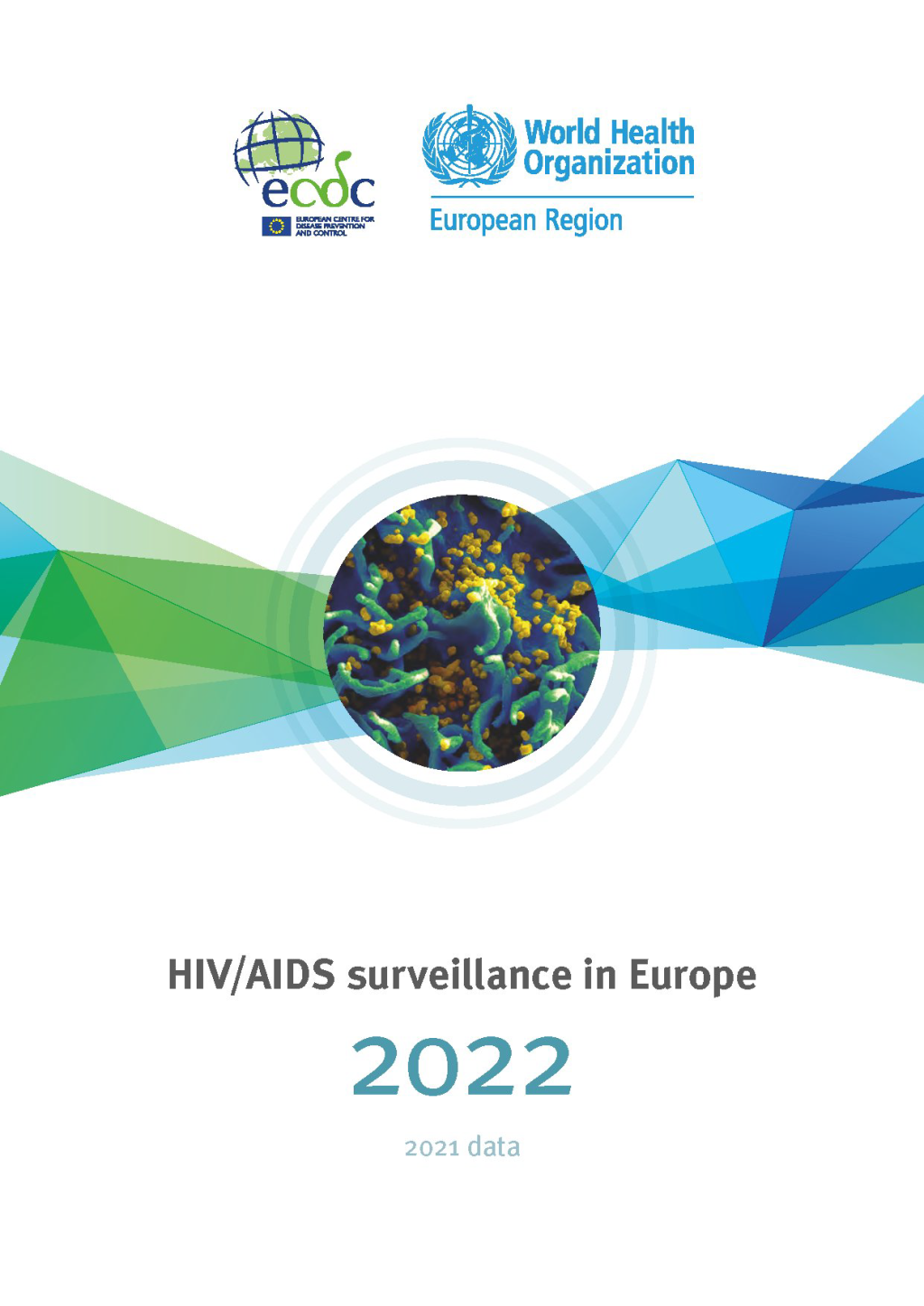
Joint report with the WHO Regional Office for Europe on HIV/AIDS surveillance – 2021 data
HIV transmission remains a major public health concern and affects more than 2.3 million people in the WHO European Region, particularly in the Eastern part of the Region. This report is the latest in a series published jointly by the European Centre for Disease Prevention and Control (ECDC) and the WHO Regional Office for Europe that has been reporting data on HIV and AIDS in the WHO European…
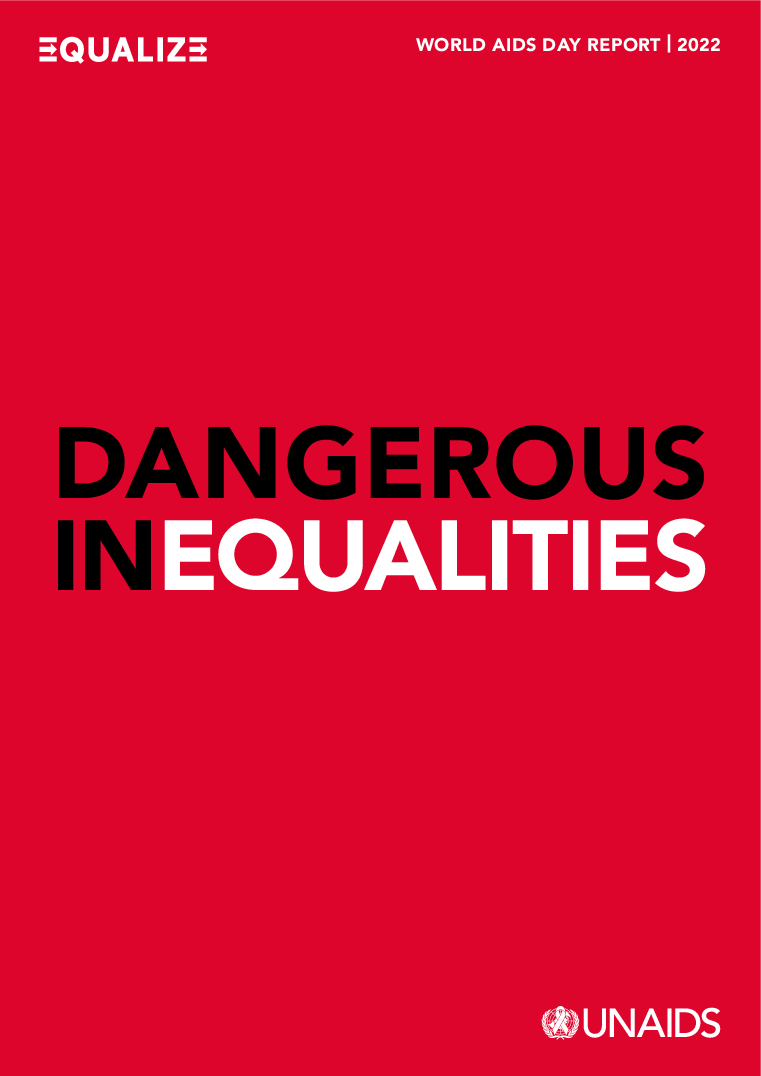
Dangerous inequalities: World AIDS Day report 2022
This report, which marks World AIDS Day 2022, unpacks the impact that gender inequalities, inequalities faced by key populations, and inequalities between children and adults have had on the AIDS response. It is not inevitable, however, that these inequalities will slow progress towards ending AIDS. We know what works—with courage and cooperation, political leaders can tackle them.
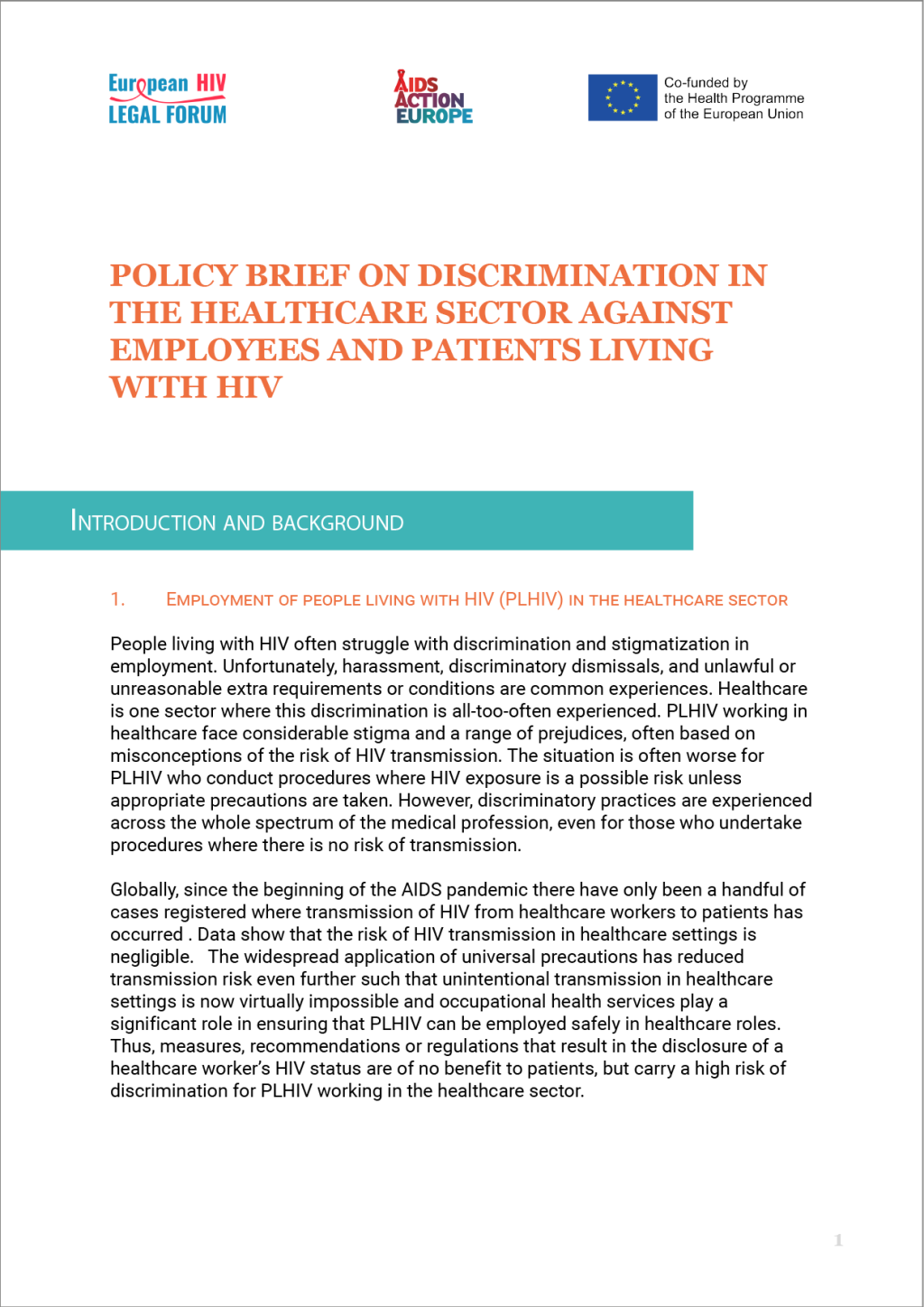
Policy brief on discrimination in the healthcare sector against employees and patients living with HIV
This policy brief is based on findings of two reports developed as part of the European HIV Legal Forum's work on stigma and discrimination in health care: an 11-countries report focusing on discrimination against people living with HIV in healthcare settings and 6-countries report on discrimination against people living with HIV working in the healthcare settings. This policy brief is available…
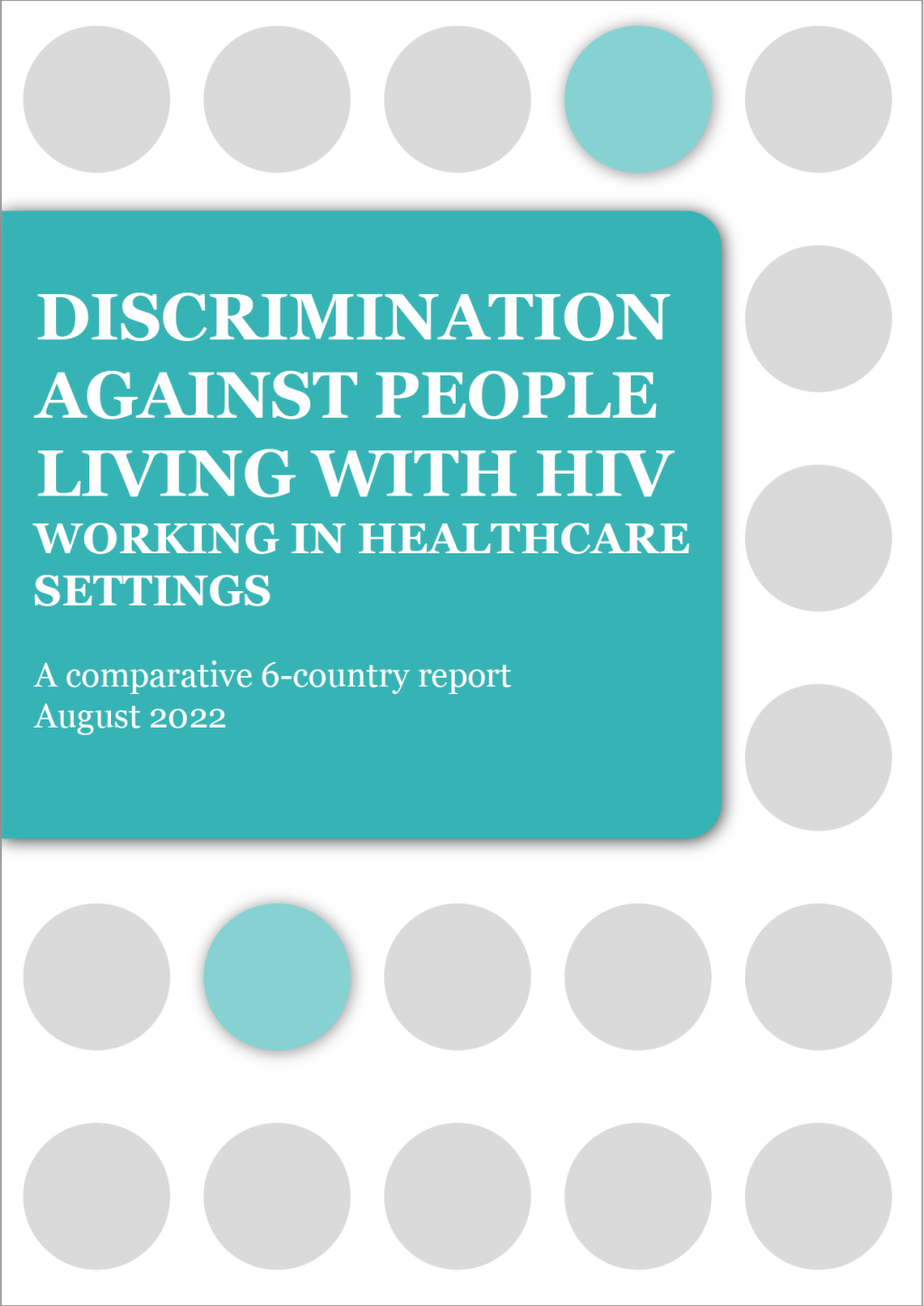
Discrimination against PLHIV working in healthcare settings
Worldwide, the field of employment is one of those where PLHIV often face serious discrimination. Harassment, discriminatory dismissals, or illegitimate extra requirements or conditions are unfortunately common experience. This even intensifies in health care sector. PLHIV working there keep facing strong stigma and variety of prejudices. The misconceptions strengthen up when it comes to PLHIV…
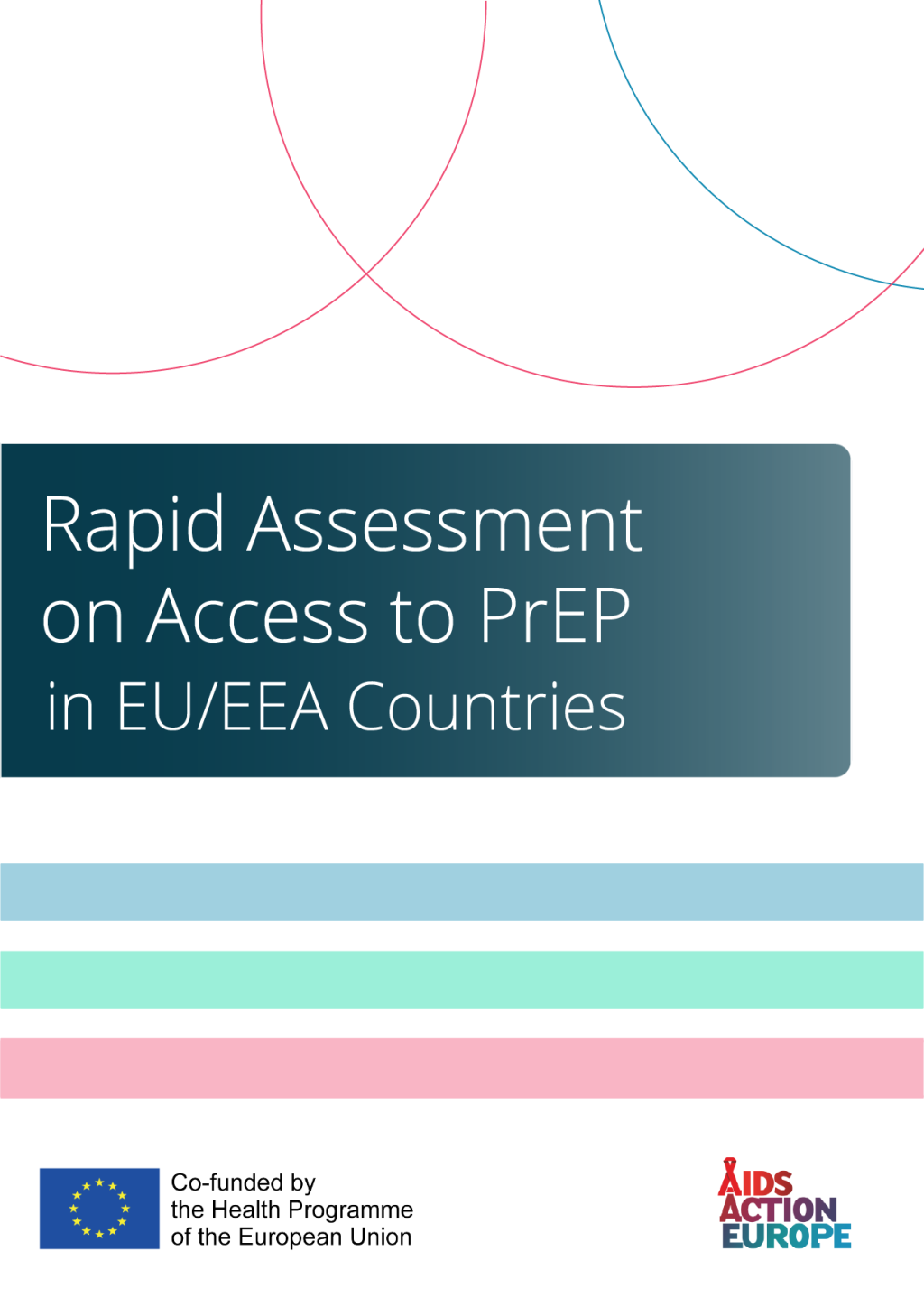
Rapid Assessment on Access to PrEP in EU/EEA Countries
The efforts to expand the use of PrEP face challenges worldwide. As such, the
UNAIDS target of 3 million people having access to PrEP by 2020 globally, was not4
met. In Europe, there were 68 089 oral PrEP initiations in 2020.5 According to the
European Centre for Disease Prevention and Control (ECDC), "Greater access to PrEP
and progress in PrEP implementation is needed to reach the SDG of ending…
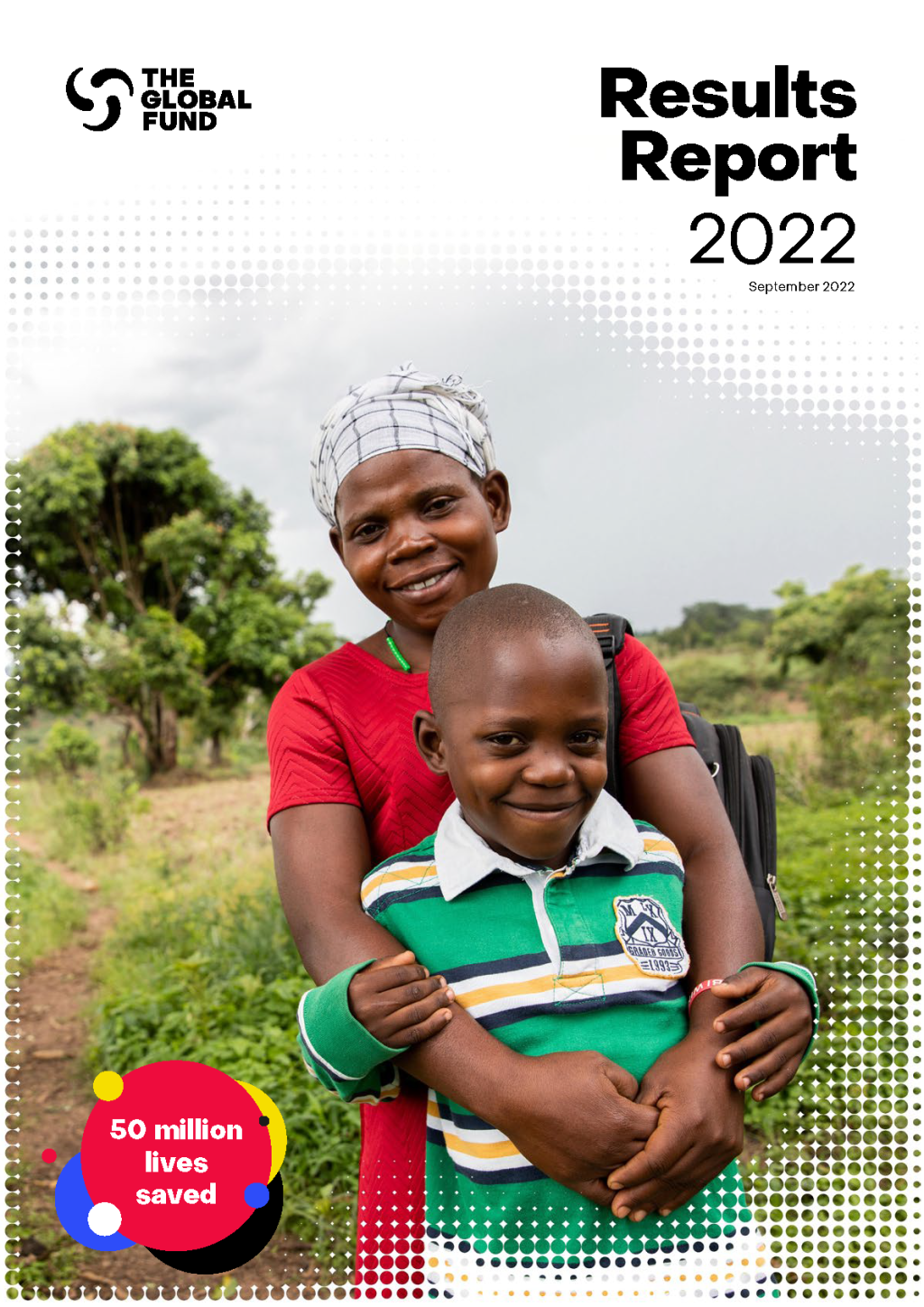
Global Fund Results Report 2022
Global Fund Results Report 2022 details how the partnership played a critical role in supporting countries and communities to respond to the pandemic and continue the progress in the fight against HIV, TB and malaria.
The coverage of treatment and prevention interventions for HIV, TB and malaria in countries where the Global Fund invests has increased rapidly since we were created in 2002.…
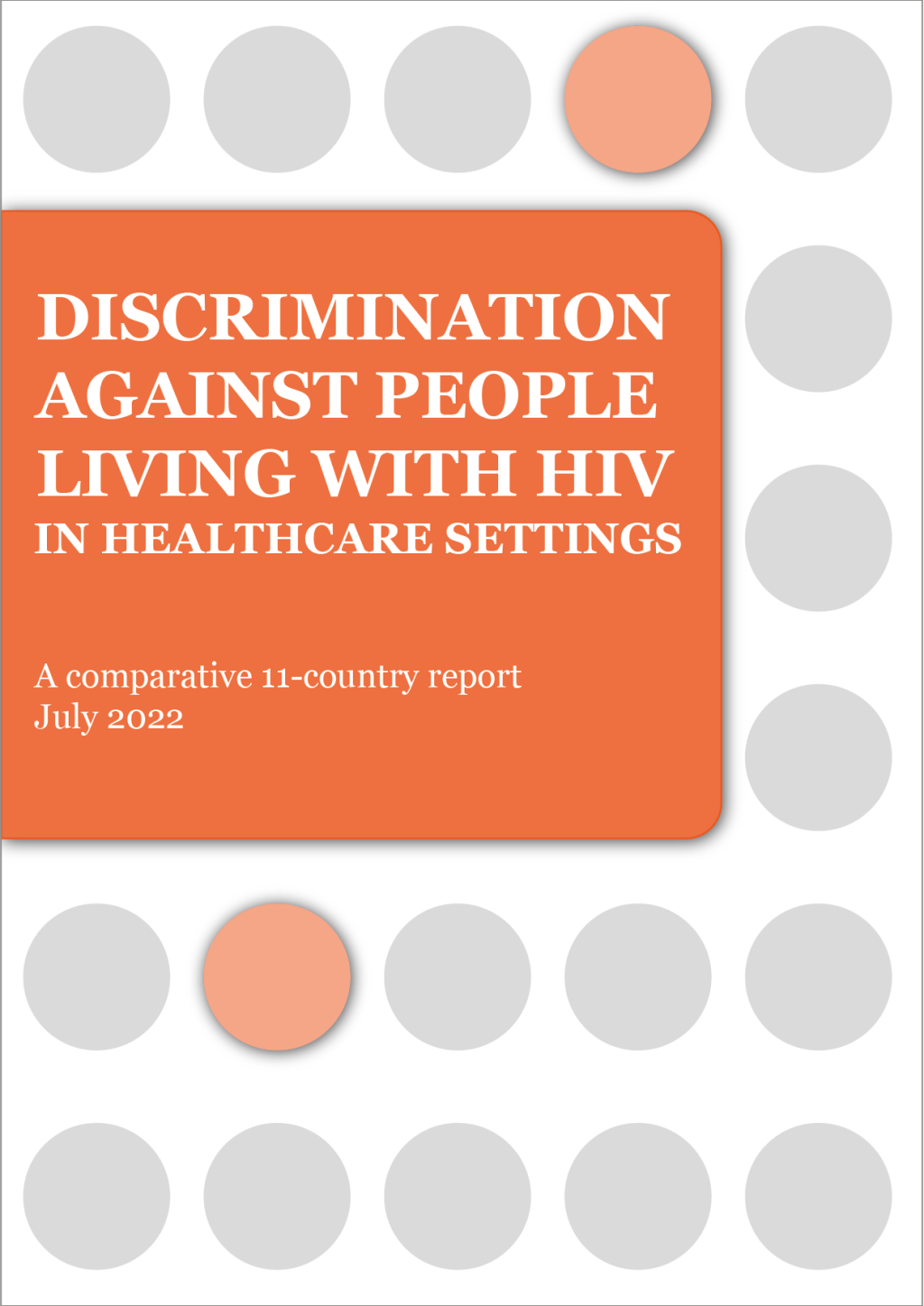
Discrimination against People Living with HIV in Healthcare Settings
As long as stigma and discrimination are present in the society, both the global and
local initiatives will continue to fail to meet the objectives of reducing new infections,
increasing voluntary counselling and testing, having better linkages to care, and
increasing the number of PLHIV whose viral load is suppressed.
Tackling stigma and discrimination stands in the centre of all AAE’sactivities…
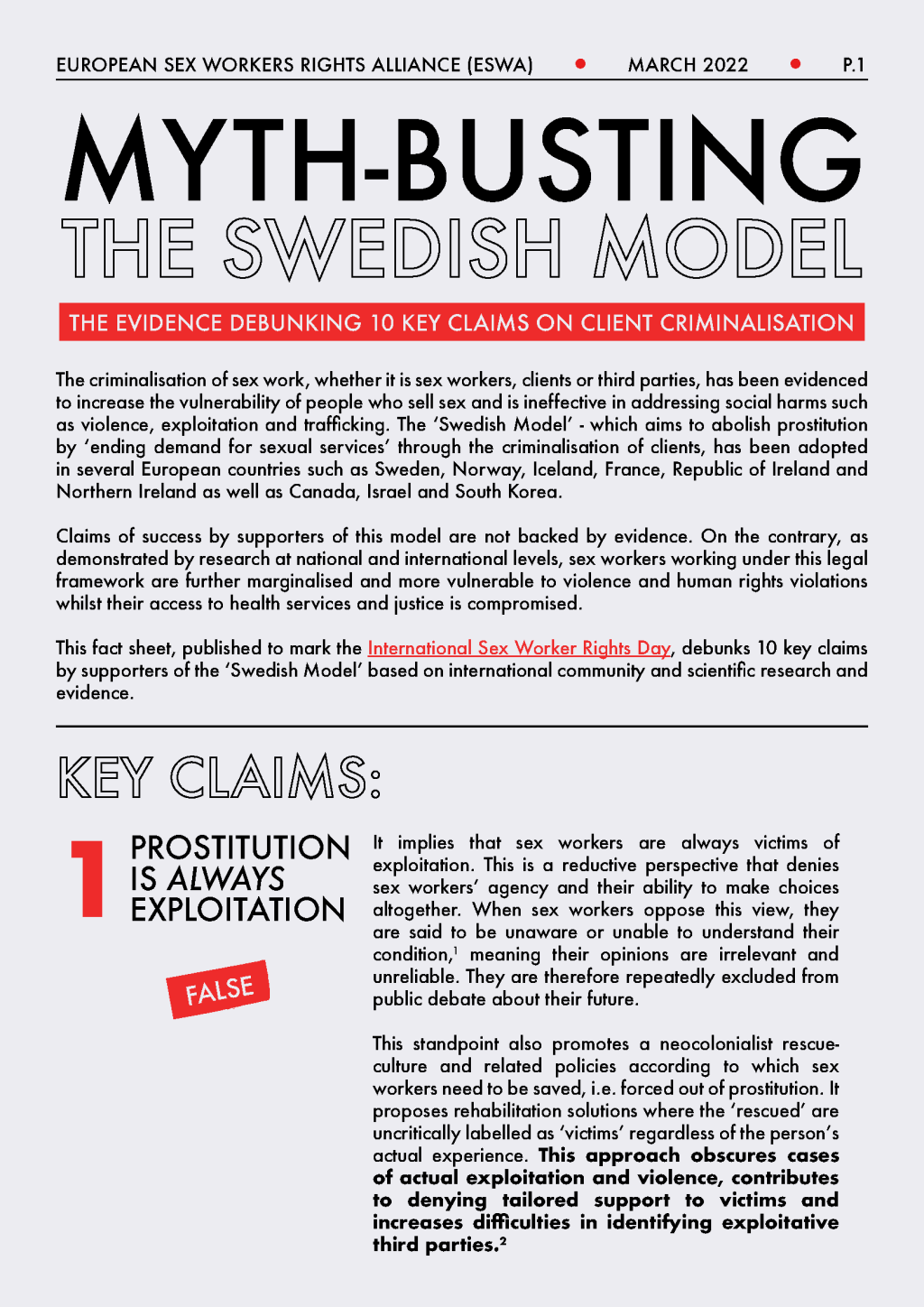
Myth-Busting the Swedish Model: The Evidence Debunking 10 Key Claims of Client Criminalisation
Pioneered in Sweden, where it became law in 1999, this model has now been adopted by six European countries (Norway 2009, Iceland 2009, Northern Ireland 2015, France 2016, Republic of Ireland 2017) and two other countries further afield (Canada 2014, Israel 2017).
The evidence against the Swedish Model approach has been damning. Sex workers have consistently reported that criminalising clients…
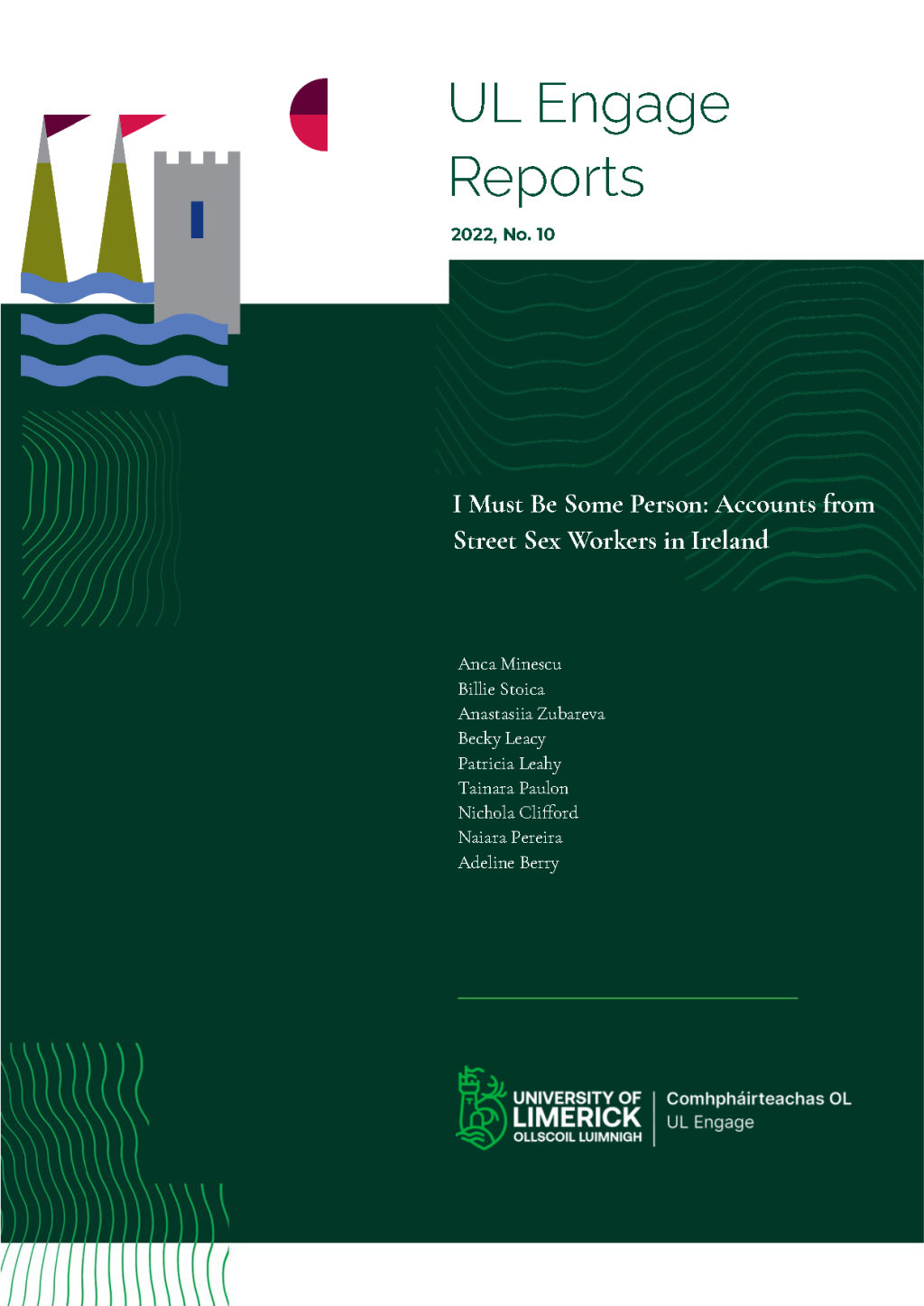
I Must Be Some Person: Accounts from Street Sex Workers in Ireland
According to the report, the introduction of the new criminal law expands beyond legal frameworks, given that the implementation of any legislation involves complex psychological, social, cultural, and geographical as well as demographic factors. The primary research questions that drove the design of the study were formulated to understand the impact that the Criminal Law (Sexual Offences) Act…
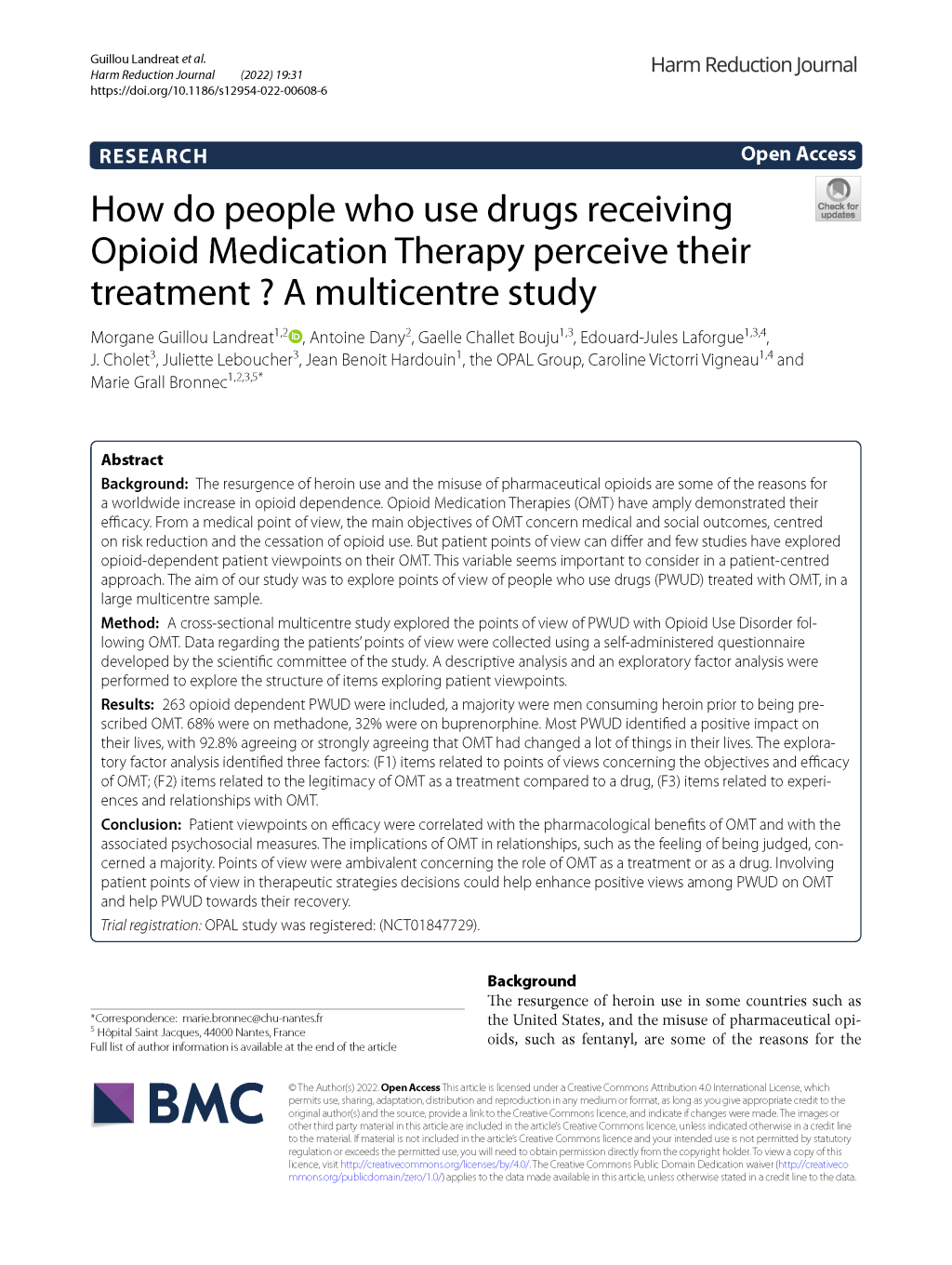
How do people who use drugs receiving Opioid Medication Therapy perceive their treatment ? A multicentre study
The resurgence of heroin use and the misuse of pharmaceutical opioids are some of the reasons for a worldwide increase in opioid dependence. Opioid Medication Therapies (OMT) have amply demonstrated their efficacy. From a medical point of view, the main objectives of OMT concern medical and social outcomes, centred on risk reduction and the cessation of opioid use. But patient points of view can…
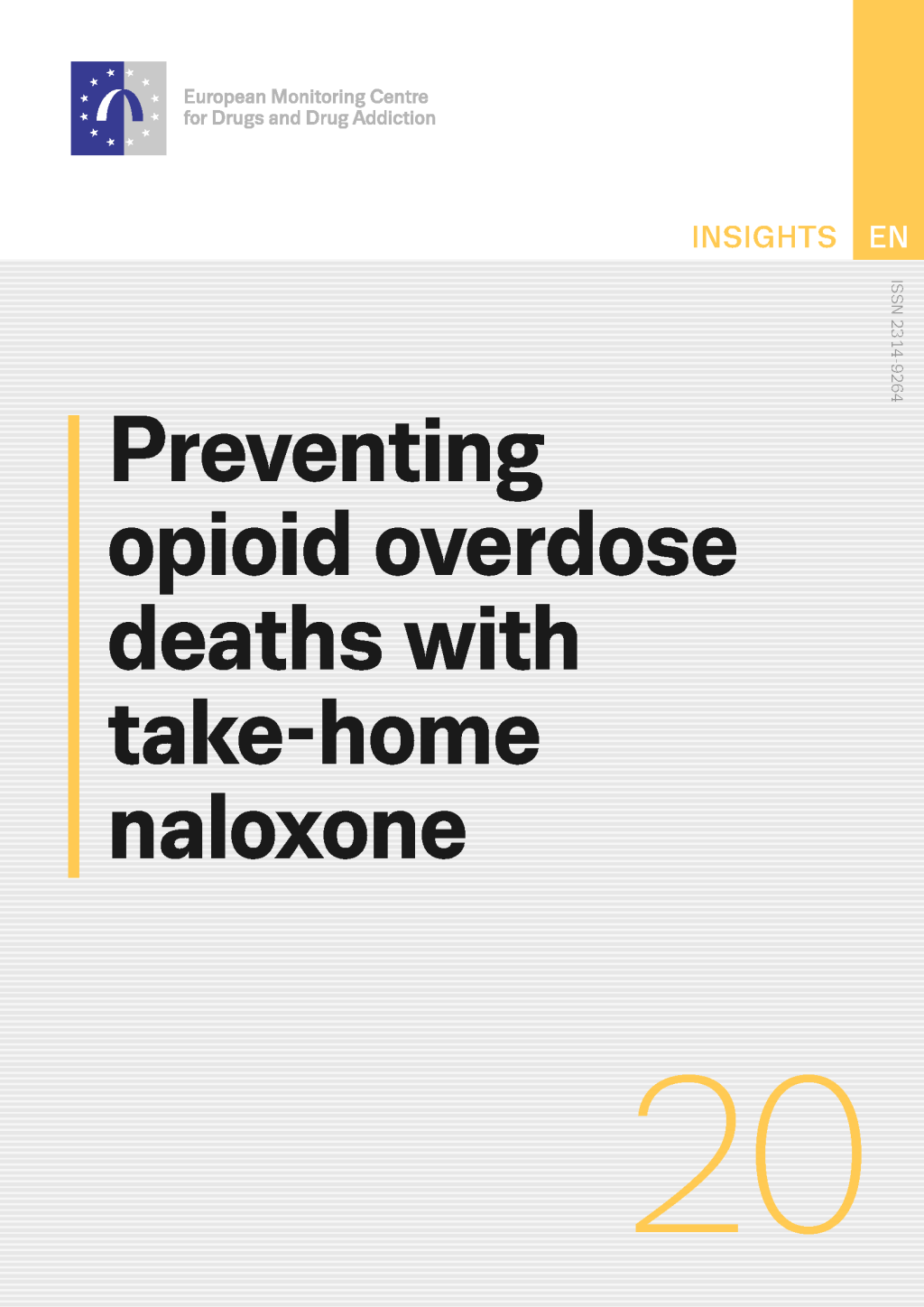
Preventing opioid overdose deaths with take-home naloxone
This publication examines the case for distributing naloxone, an emergency medication, to people who inject opioids such as heroin and to others who might witness an opioid overdose. Through its capacity to reverse opioid overdose, naloxone can save lives if administered in time. This comprehensive review looks at opioid overdose and how naloxone counteracts it, and discusses the circumstances of…
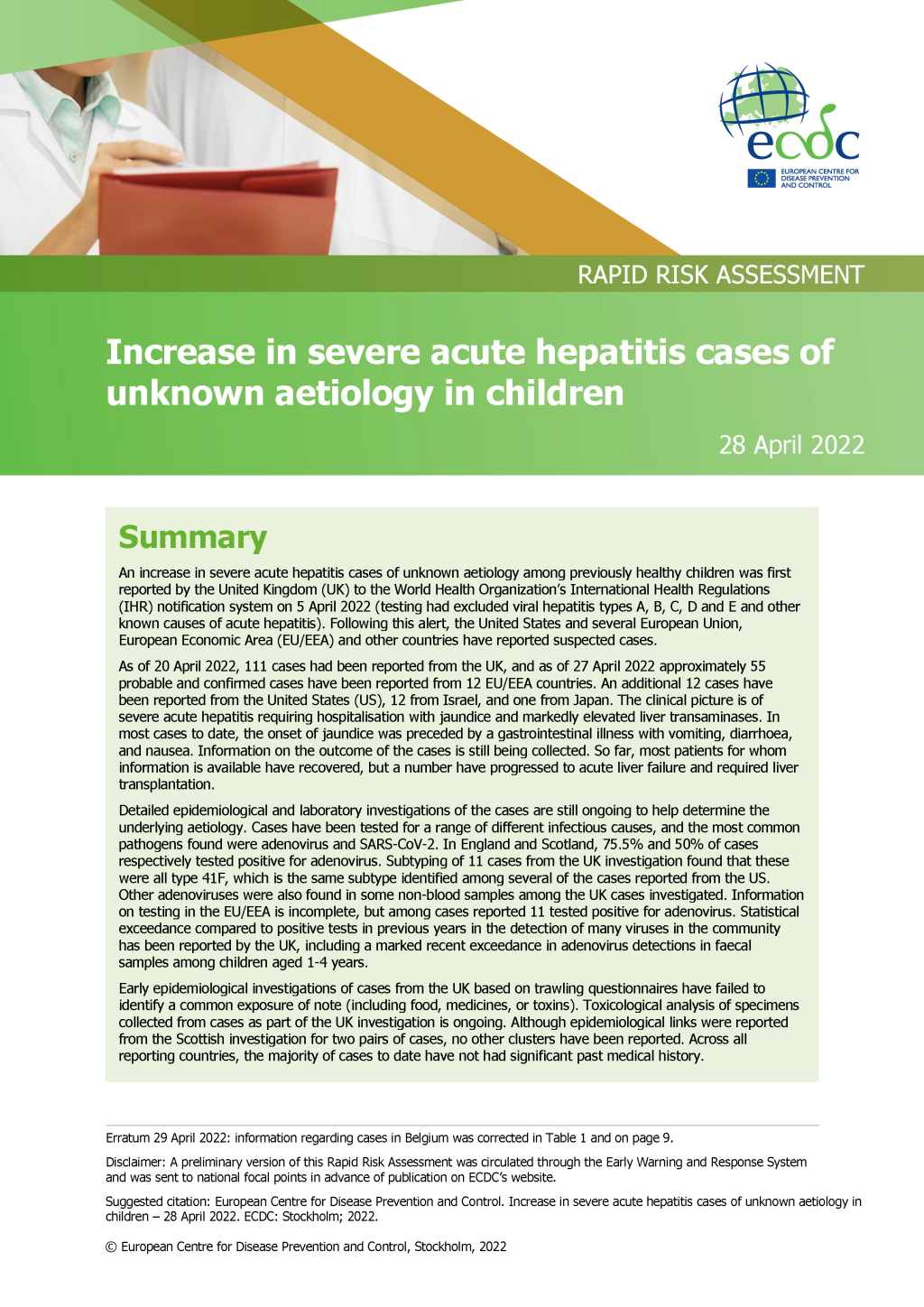
Increase in severe acute hepatitis cases of unknown aetiology in children
As of 20 April 2022, 111 cases had been reported from the UK, and as of 27 April 2022 approximately 55 probable and confirmed cases have been reported from 12 EU/EEA countries. An additional 12 cases have been reported from the United States (US), 12 from Israel, and one from Japan. The clinical picture is of severe acute hepatitis requiring hospitalisation with jaundice and markedly elevated…
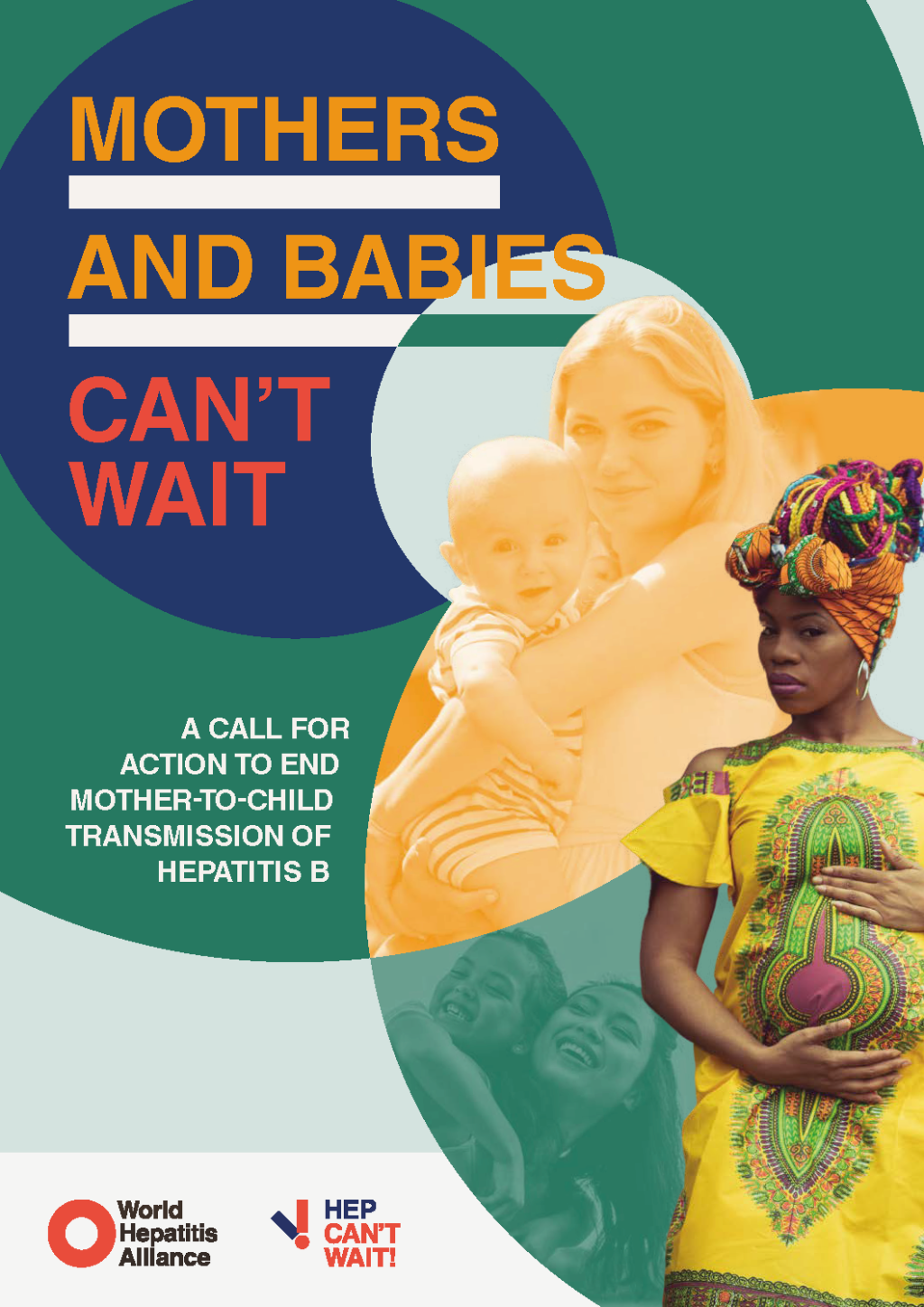
Mothers and babies can’t wait: A call for action to end mother-to-child transmission of hepatitis
As the World Health Organization (WHO) works toward its goal to eliminate hepatitis B by 2030, the quest to halt hepatitis B mother-to-child transmission has never been more urgent.
Many of the key issues brought into focus over recent years have combined to delay progress of the prevention of mother-to-child transmission (PMTCT) of hepatitis B. Such issues include racial inequality,…
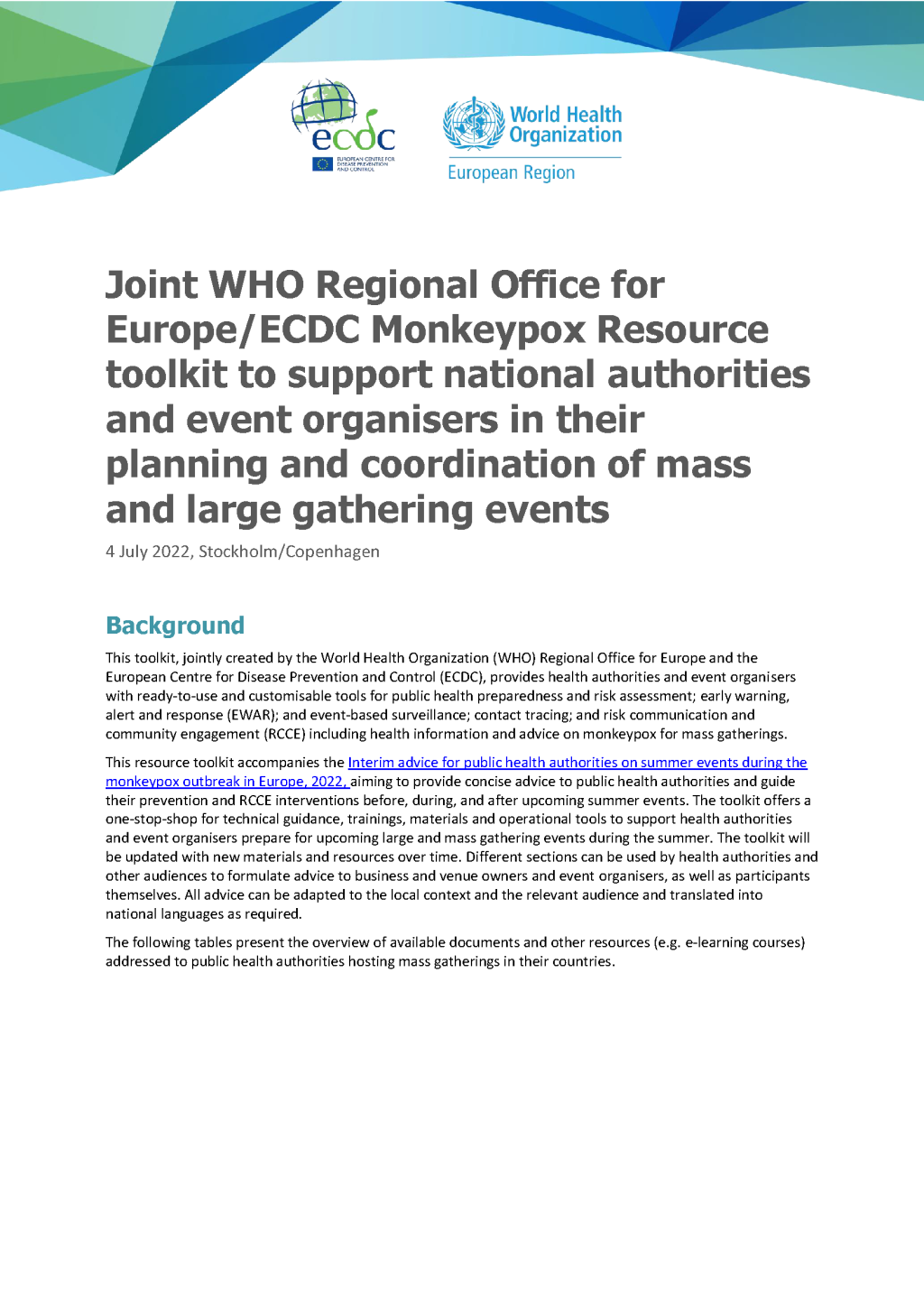
Joint WHO Regional Office for Europe/ECDC Monkeypox Resource toolkit to support national authorities and event organisers in their planning and coordination of mass and large gathering events
This toolkit, jointly created by the World Health Organization (WHO) Regional Office for Europe and the European Centre for Disease Prevention and Control (ECDC), provides health authorities and event organisers with ready-to-use and customisable tools for public health preparedness and risk assessment; early warning, alert and response (EWAR); and event-based surveillance; contact tracing; and…
